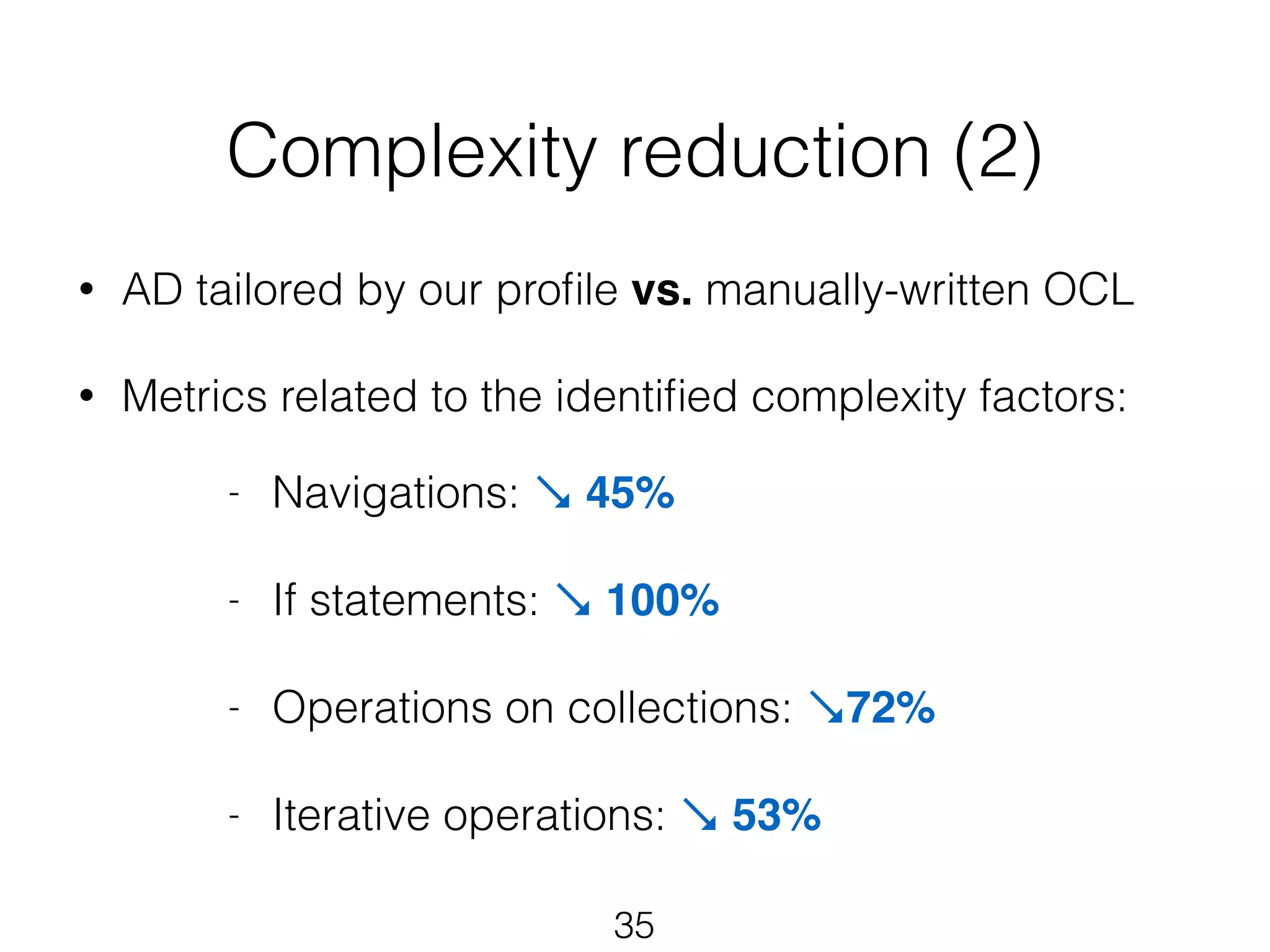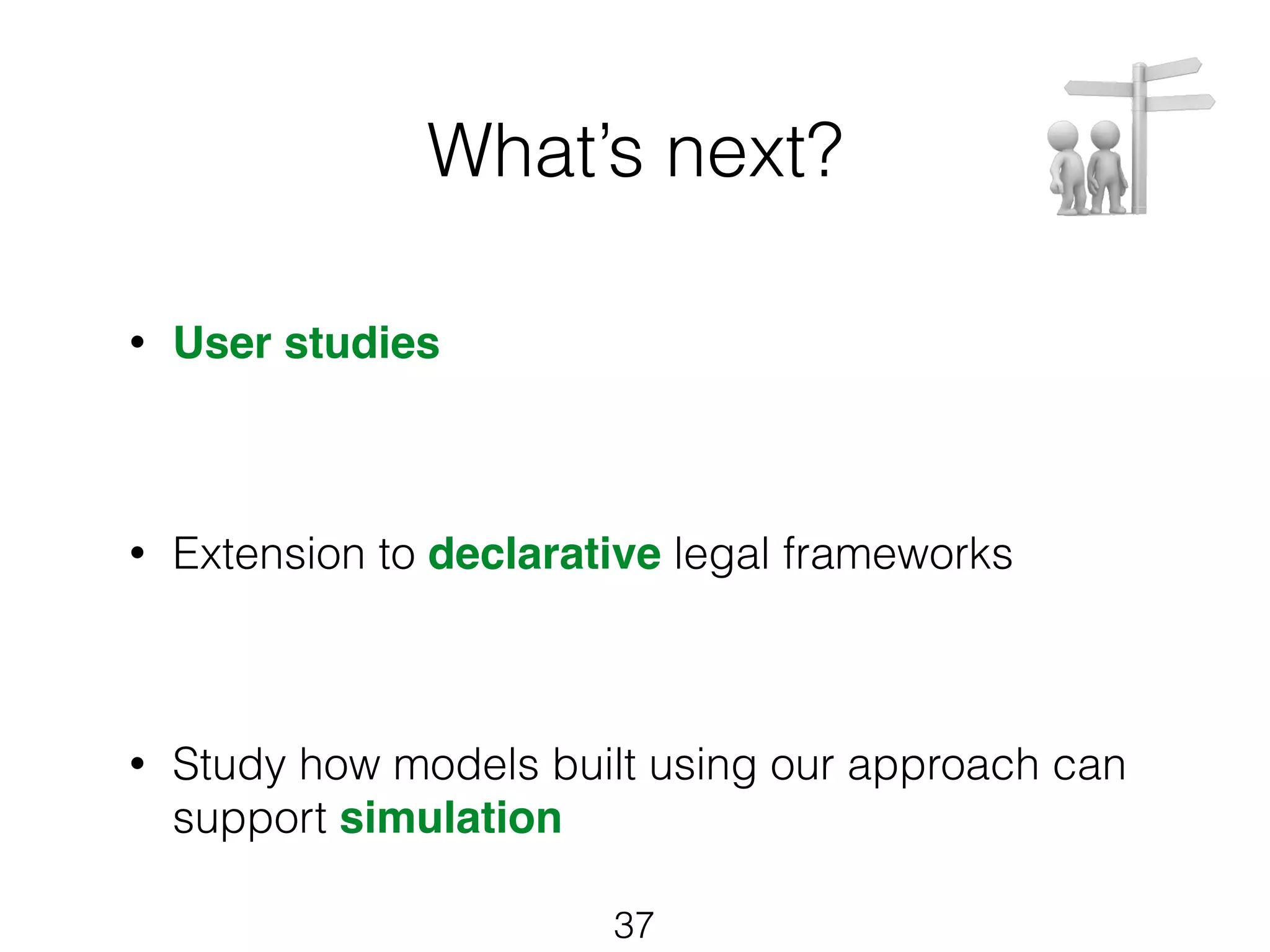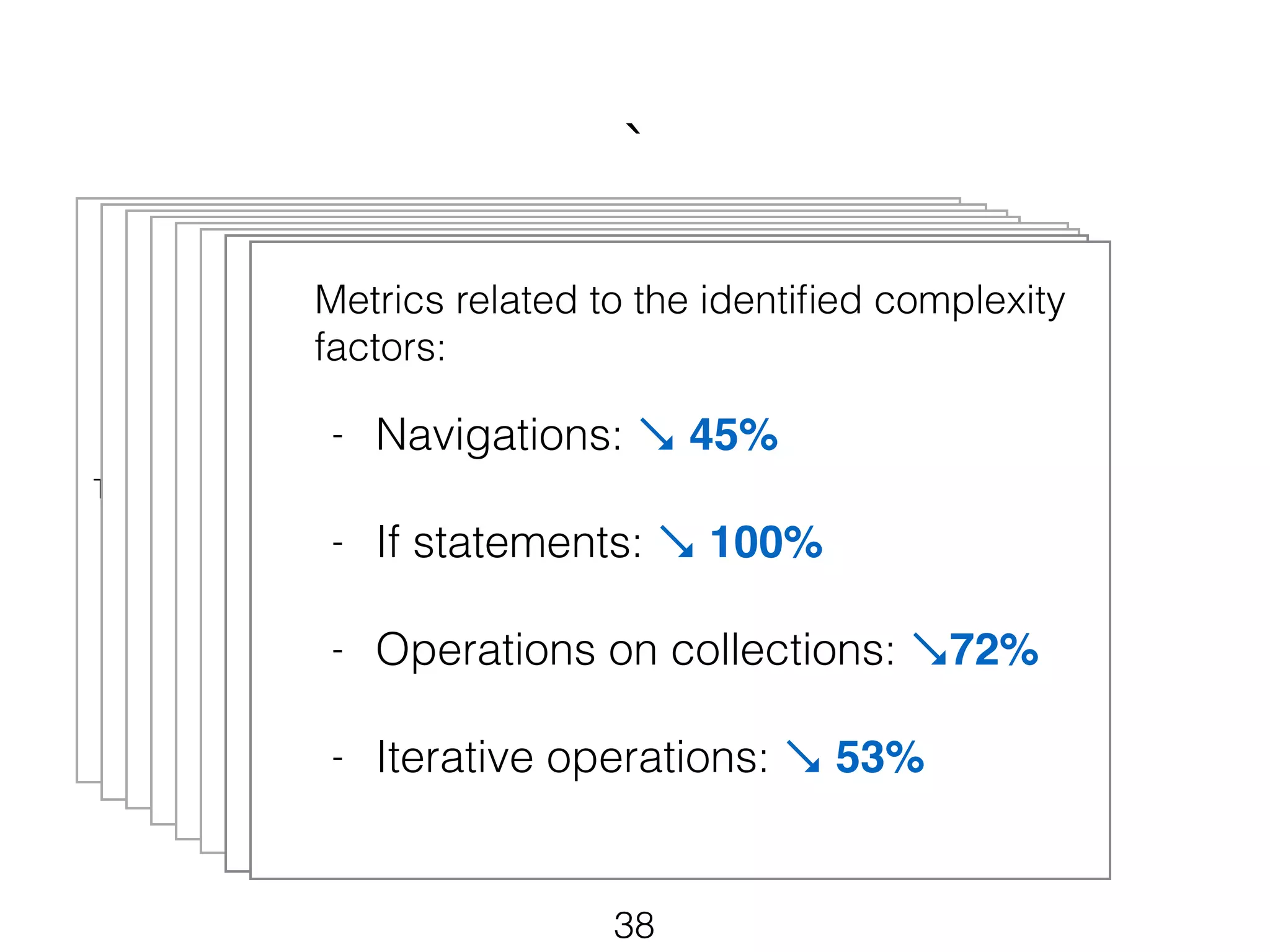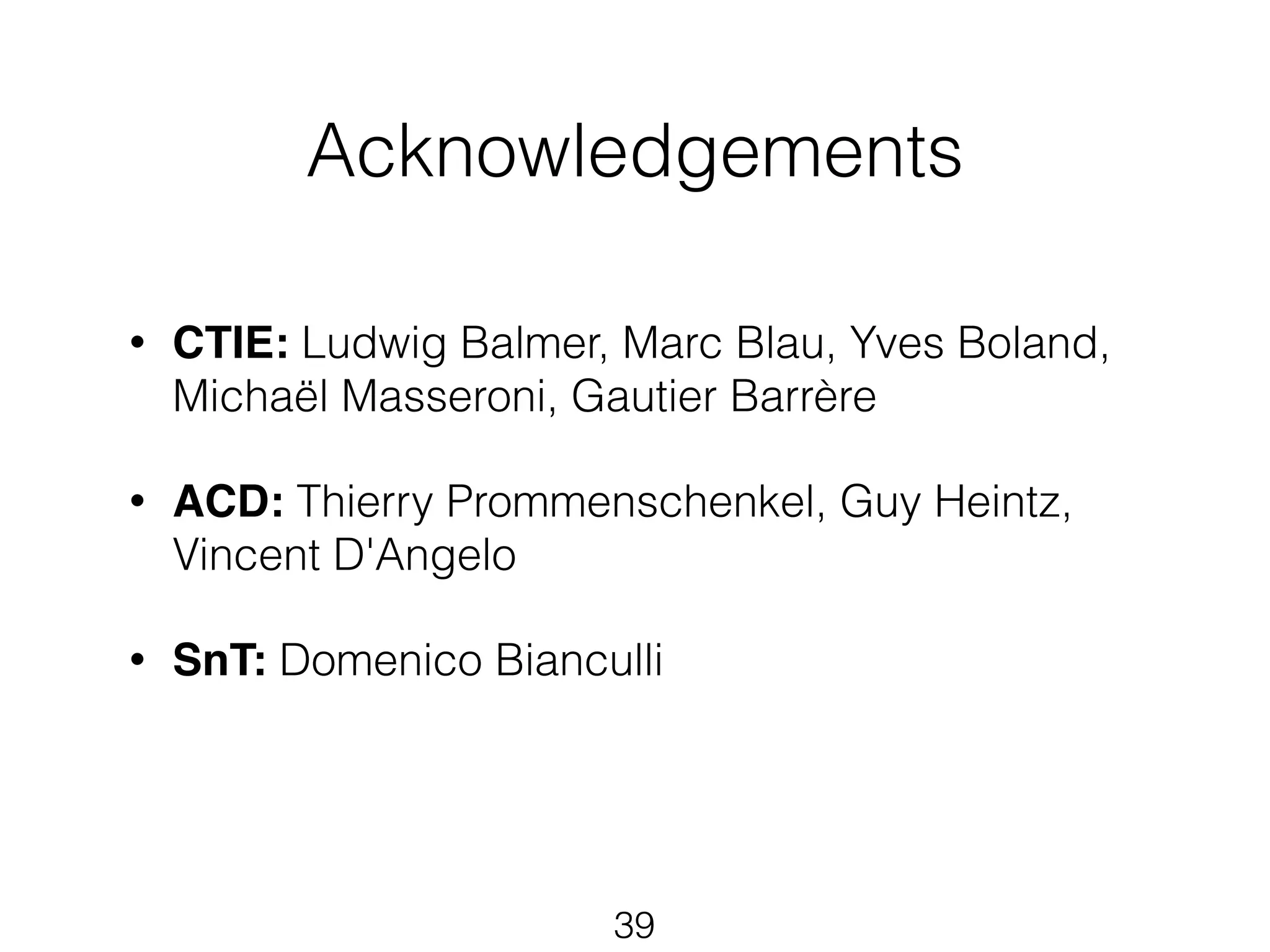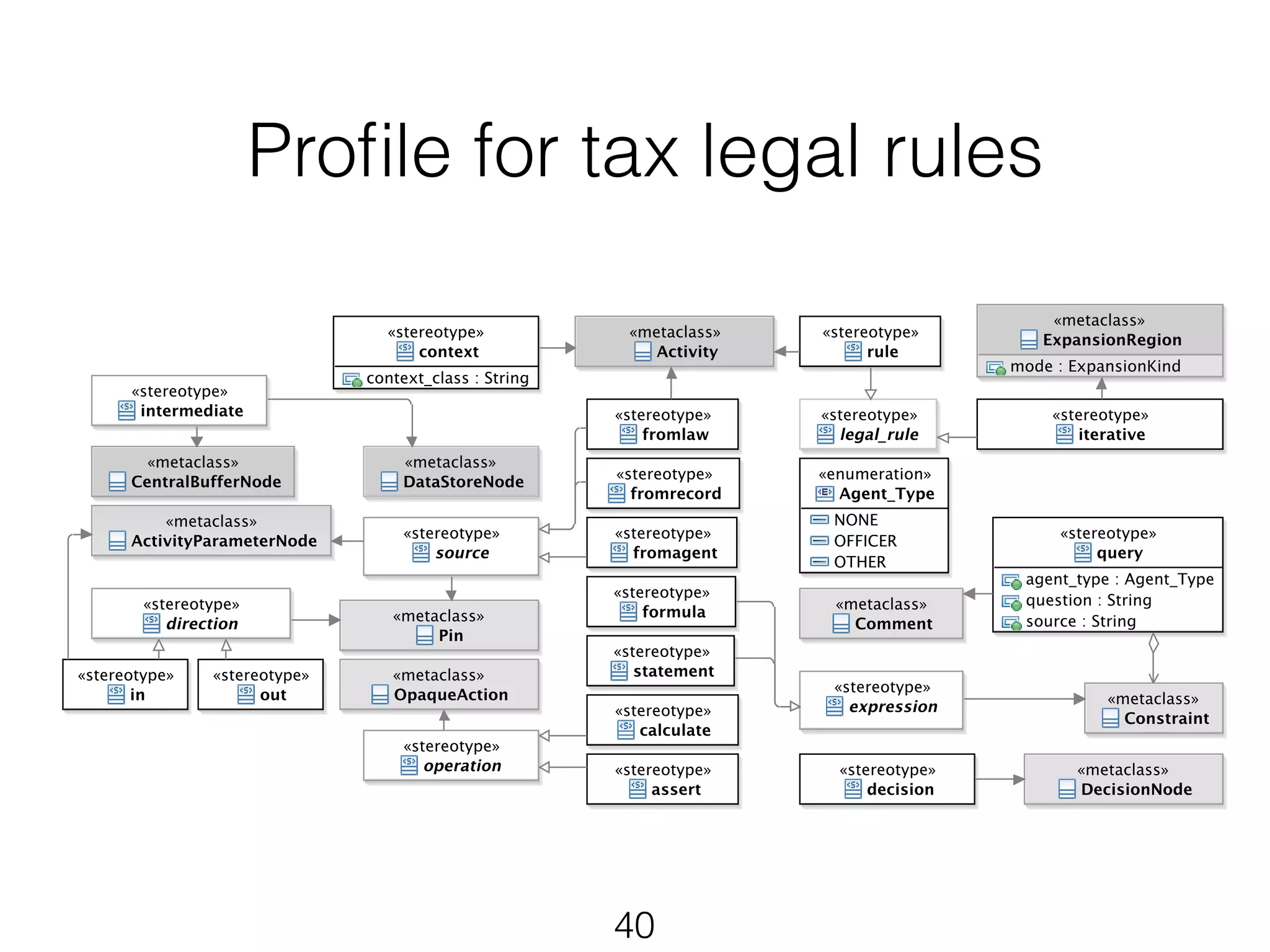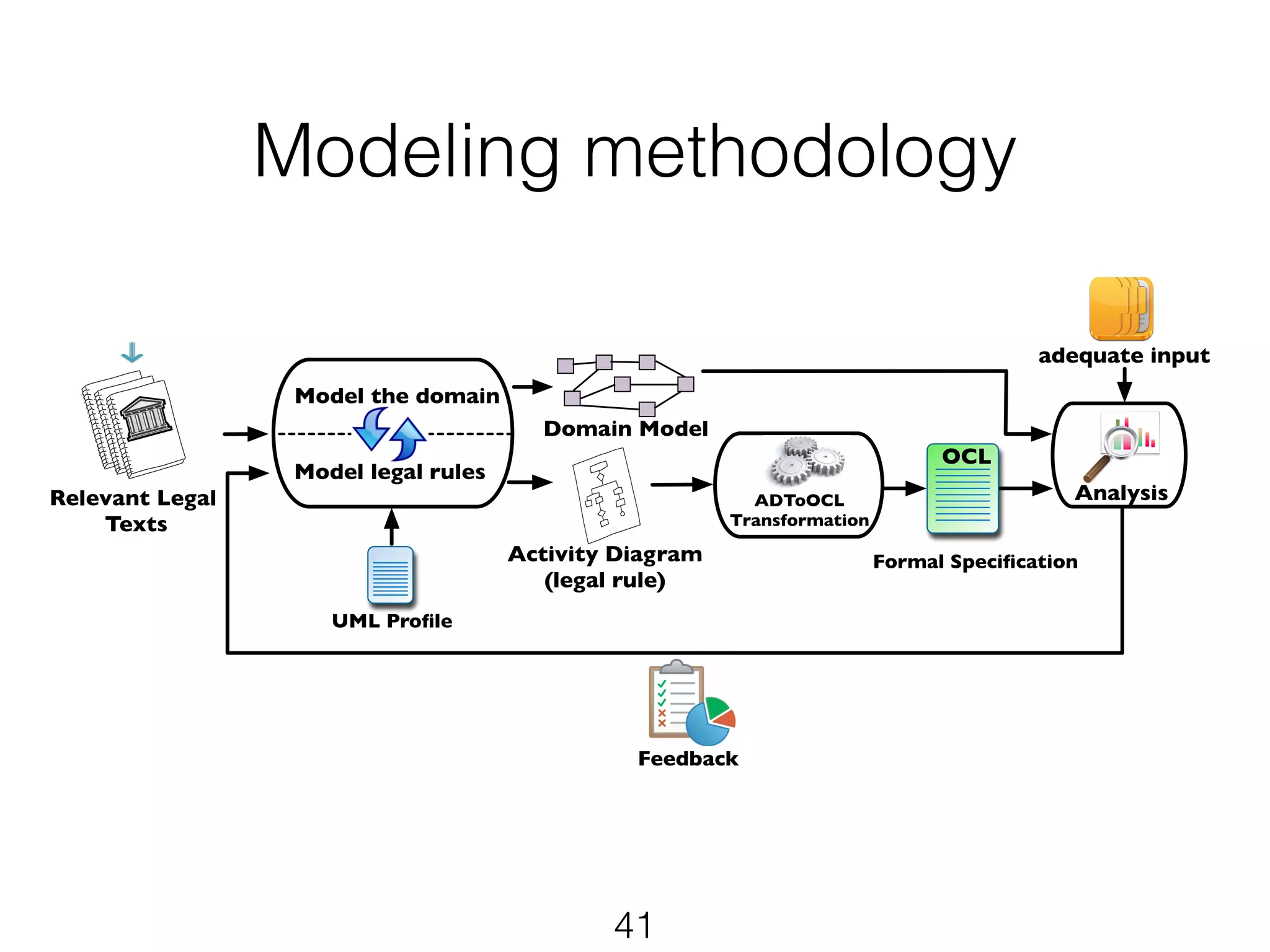This document describes research on using the Unified Modeling Language (UML) to model procedural legal rules, as demonstrated through a study of Luxembourg's tax law. Key points:
- Researchers conducted a grounded theory study of Luxembourg tax law articles to identify common meta-concepts like decisions and operations.
- They developed a UML profile customized for modeling legal rules and capturing information requirements. This profile stereotypes activity modeling elements and includes consistency constraints.
- The profile is demonstrated by modeling an example article on commuting expense deductions using decisions, operations, and other concepts from the profile. Iterations and nested calculations are also represented.
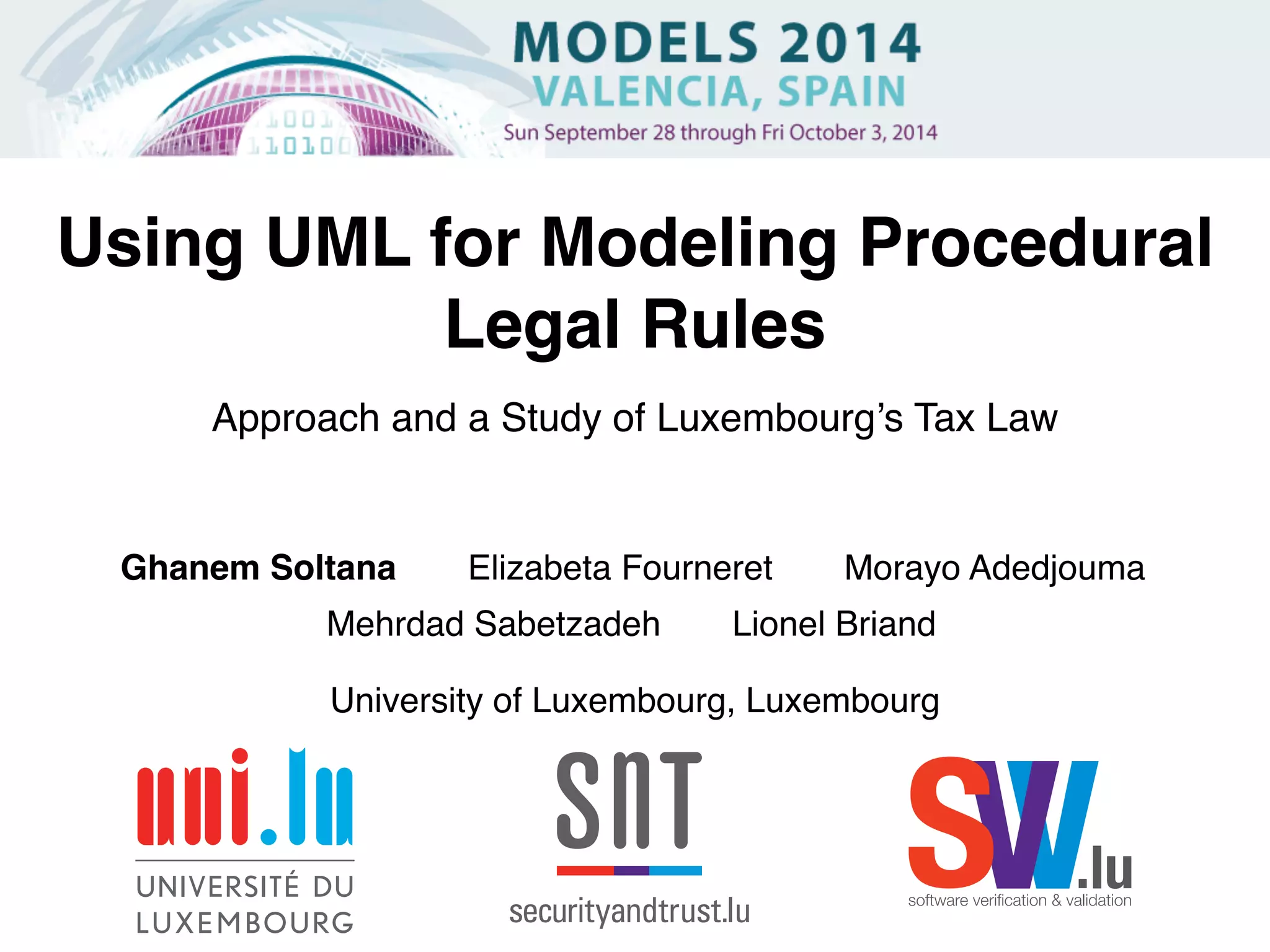
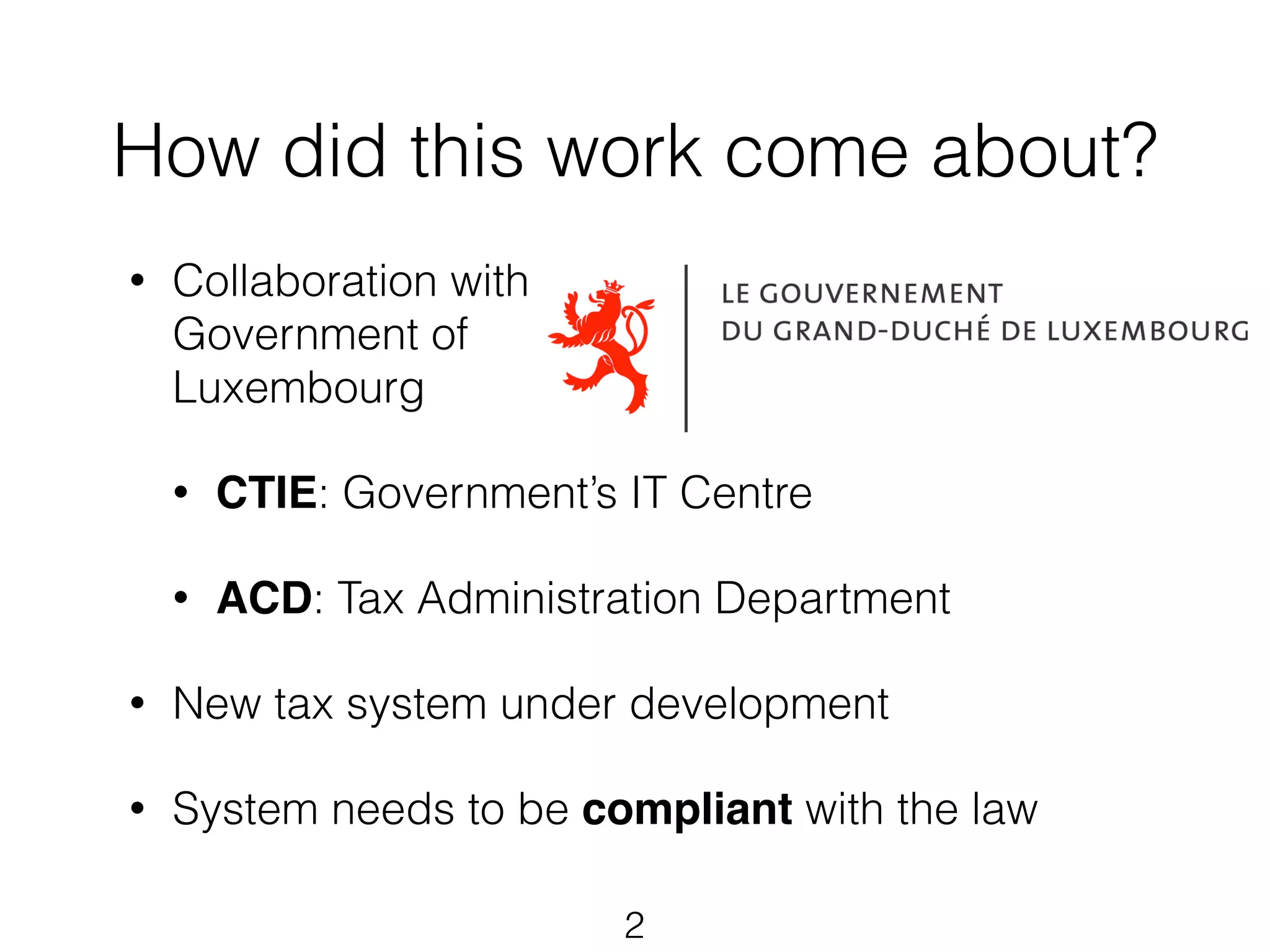
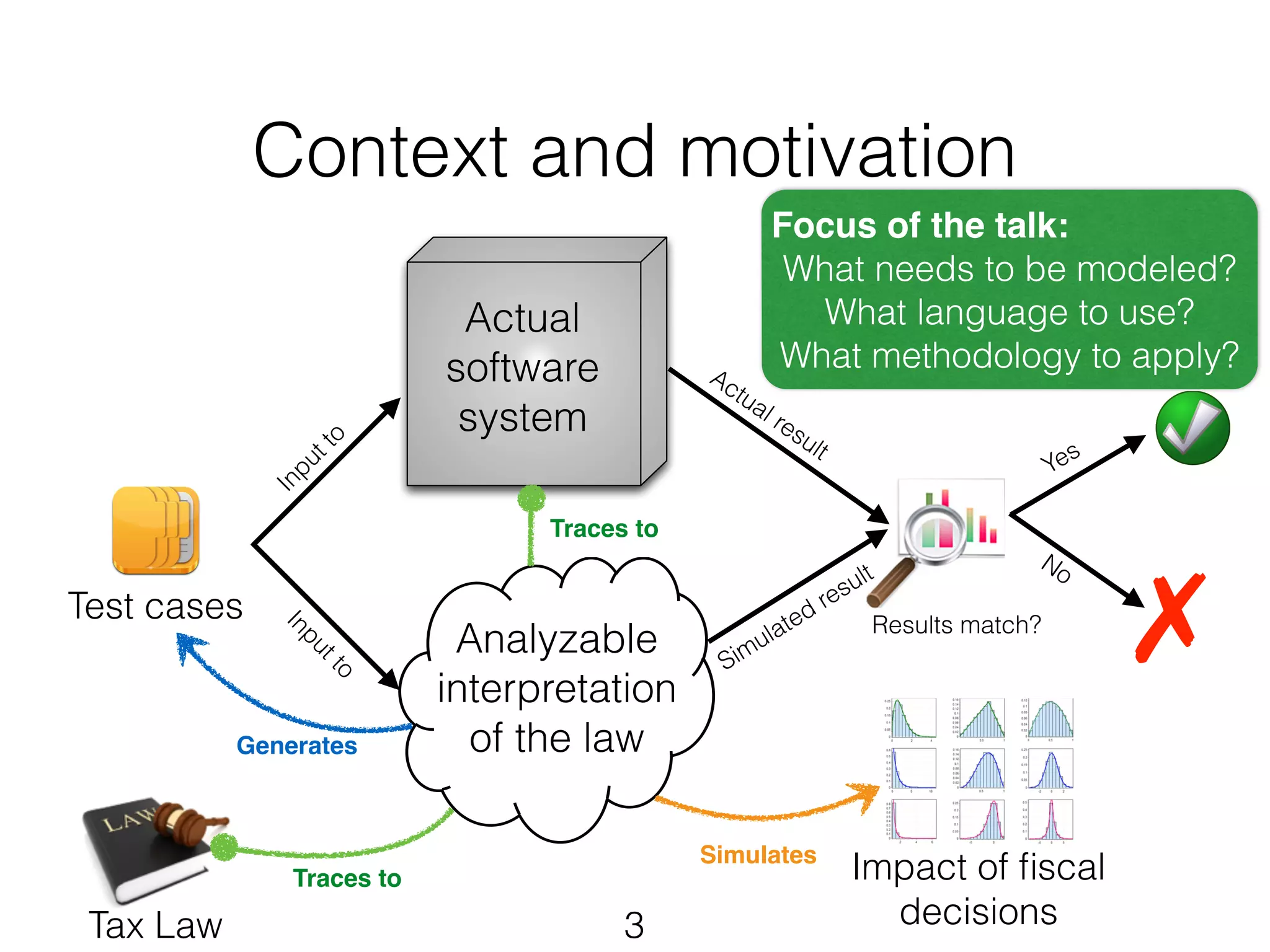
![Related work
• Dutch legislation: UML Class Diagrams + OCL
[van Engers et al., 2001]
• US Internal Revenue Code: ontologies
[Melz et al., 2004]
• US healthcare: rule-based framework
[Breaux, 2009]
4](https://image.slidesharecdn.com/ghanem-models14-141003122021-phpapp02/75/Using-UML-for-Modeling-Procedural-Legal-Rules-4-2048.jpg)
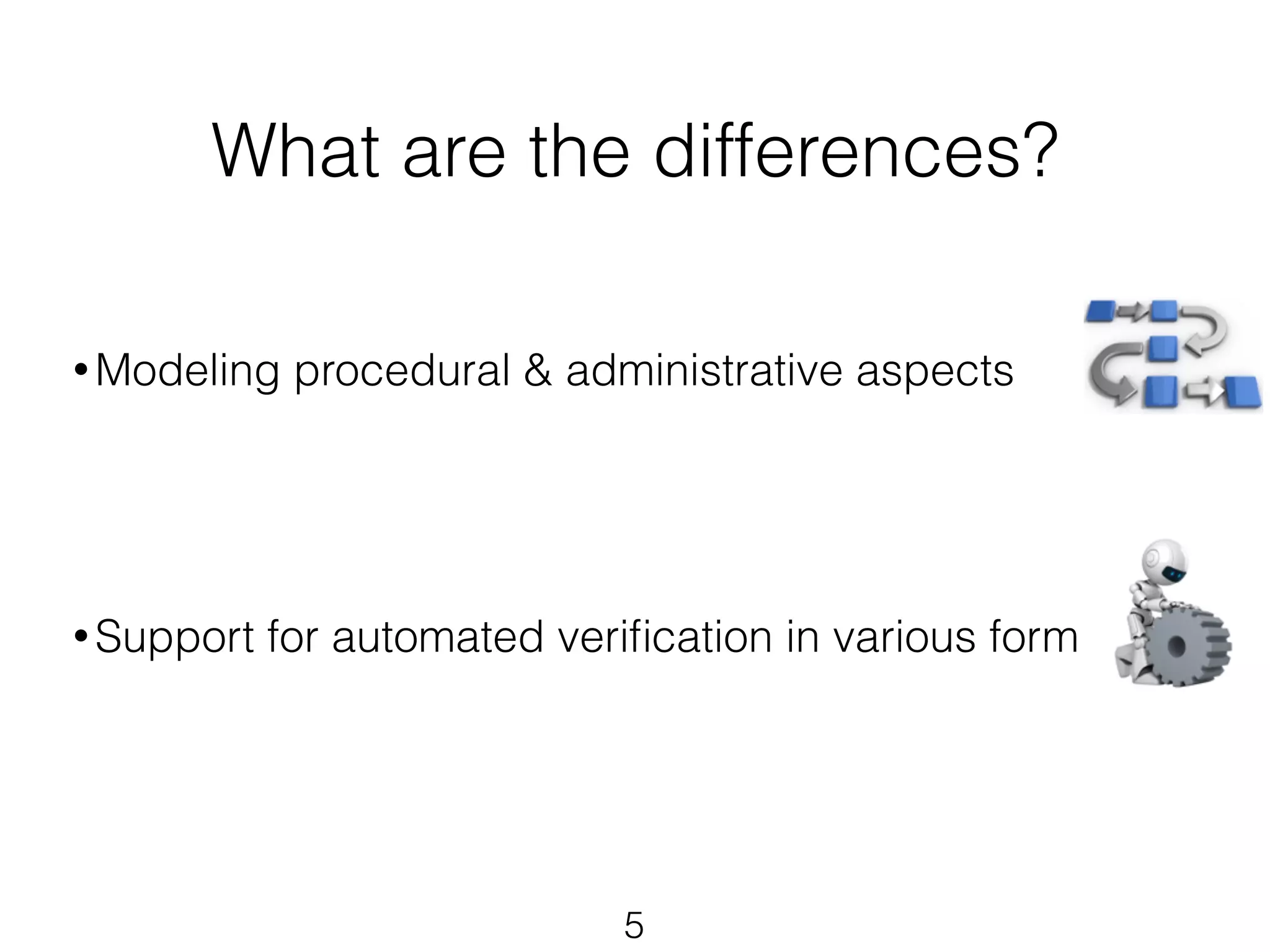
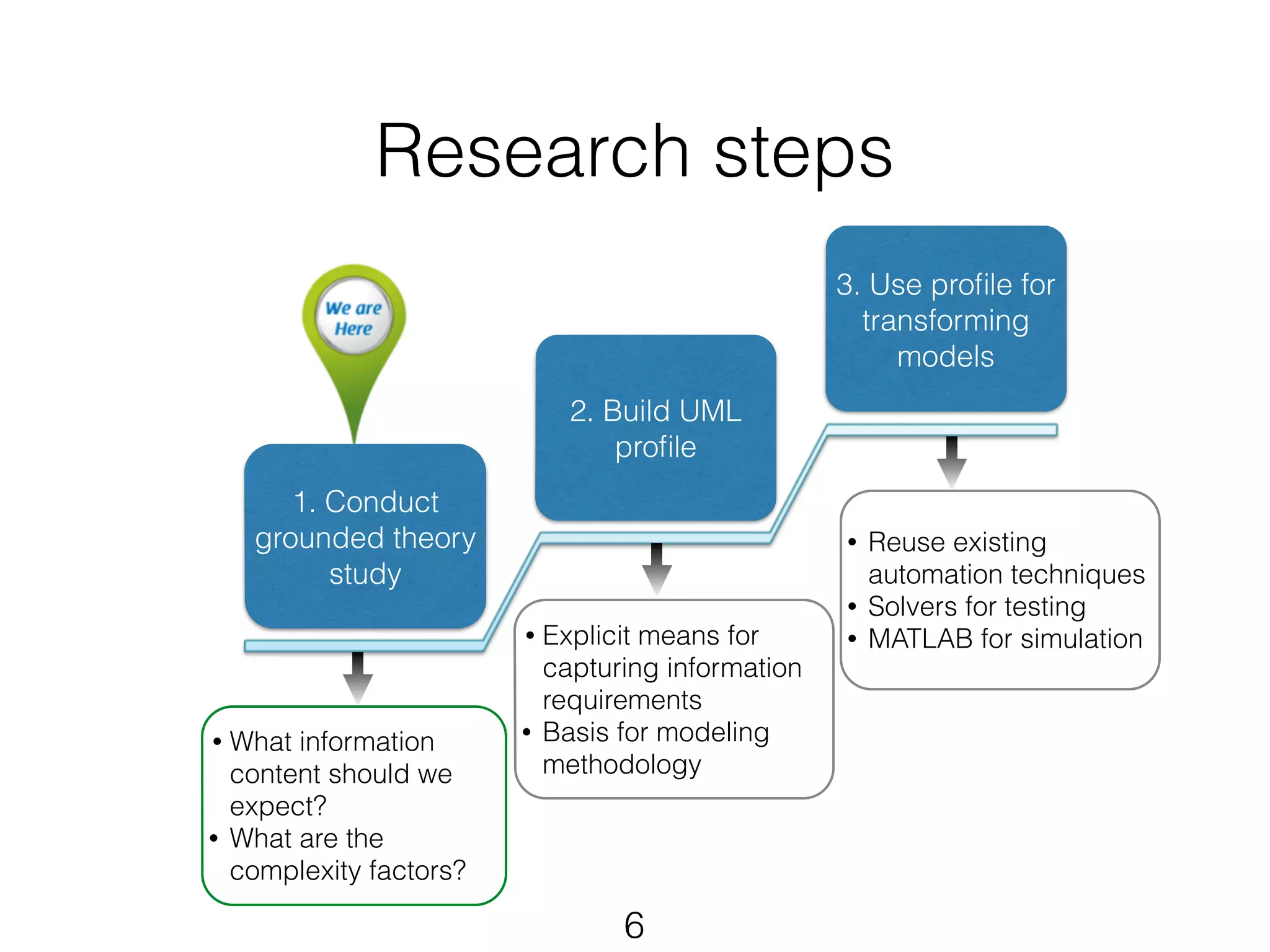
![What does the tax law look like?
• Legal framework composed of legislation,
regulations, and circulars
!
Art. 105bis […]The commuting expenses deduction (FD) is
defined as a function over the distance between the principal town
of the municipality on whose territory the taxpayer's home is
located and the place of taxpayer’s work. The distance is
measured in units of distance expressing the kilometric distance
between [principal] towns. A ministerial regulation provides these
distances.
!
The amount of the deduction is calculated as follows:
If the distance exceeds 4 units but is less than 30 units, the
deduction is € 99 per unit of distance.
The first 4 units does not trigger any deduction and the deduction
for a distance exceeding 30 units is limited to € 2,574.
• Framework has prescriptive nature
Procedure for
calculating FD
deduction
7
{{
Legal
concepts
definition](https://image.slidesharecdn.com/ghanem-models14-141003122021-phpapp02/75/Using-UML-for-Modeling-Procedural-Legal-Rules-7-2048.jpg)
![Meta-concepts in prescriptive laws
!
Grounded theory coding of 16 articles from Luxembourg’s
Income Tax Law
Art. 105bis […]The commuting expenses deduction (FD) is
defined as a function over the distance between the principal town
of the municipality on whose territory the taxpayer's home is
located and the place of taxpayer’s work. The distance is
measured in units of distance expressing the kilometric distance
between [principal] towns. A ministerial regulation provides these
distances.
!
The amount of the deduction is calculated as follows:
If the distance exceeds 4 units but is less than 30 units, the
deduction is € 99 per unit of distance.
The first 4 units does not trigger any deduction and the deduction
for a distance exceeding 30 units is limited to € 2,574.
8
Decision
Operation](https://image.slidesharecdn.com/ghanem-models14-141003122021-phpapp02/75/Using-UML-for-Modeling-Procedural-Legal-Rules-8-2048.jpg)
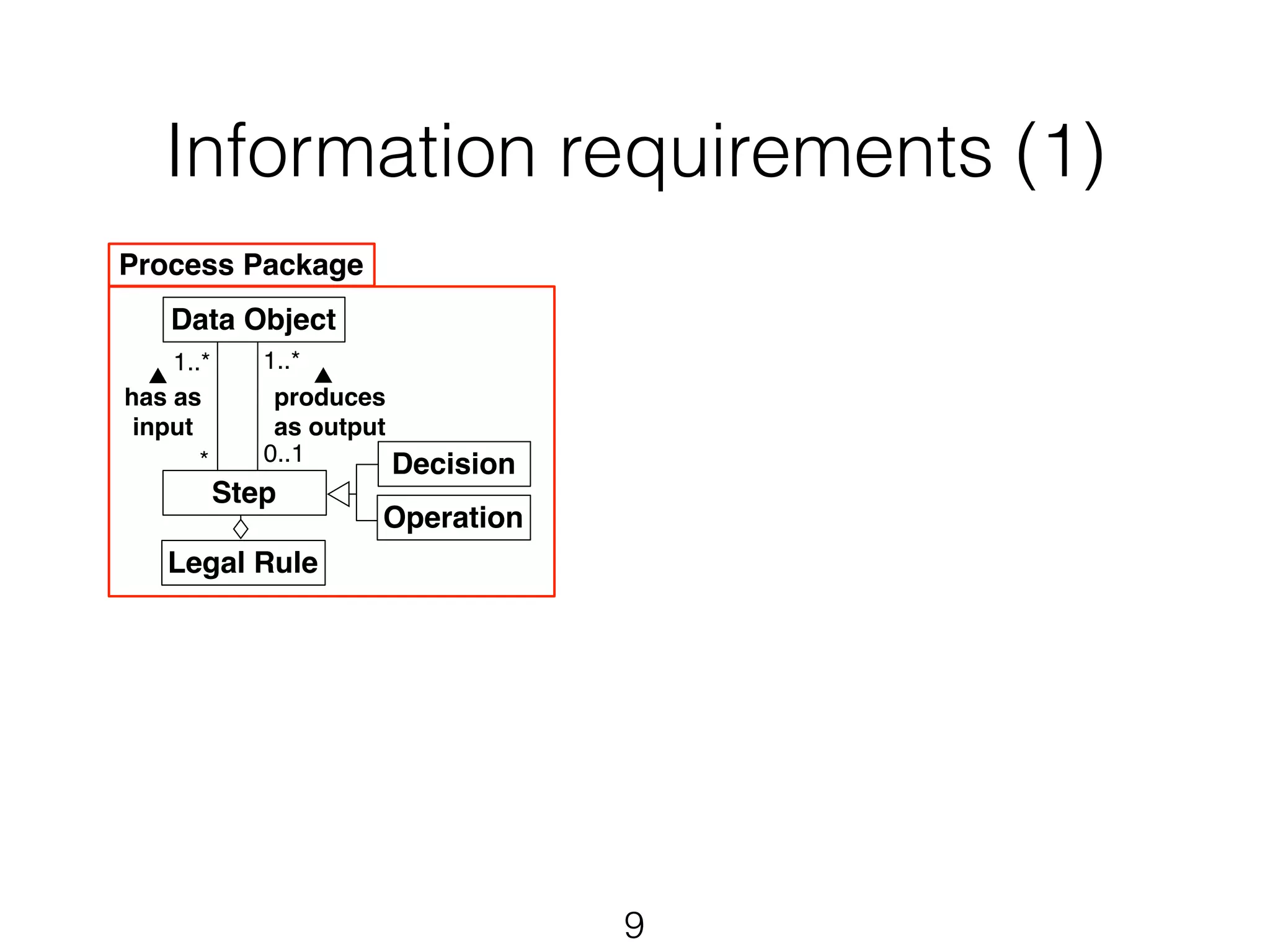
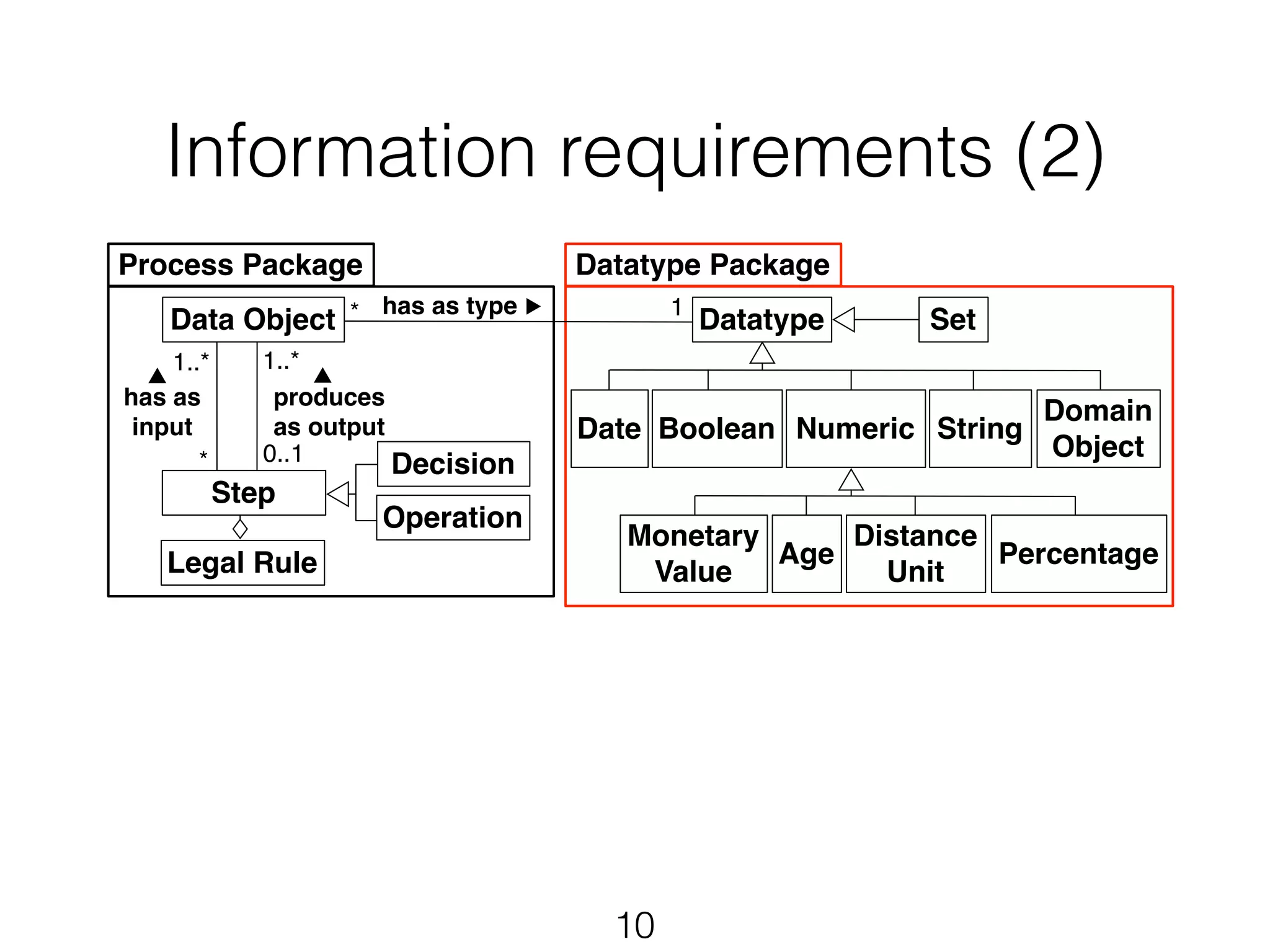
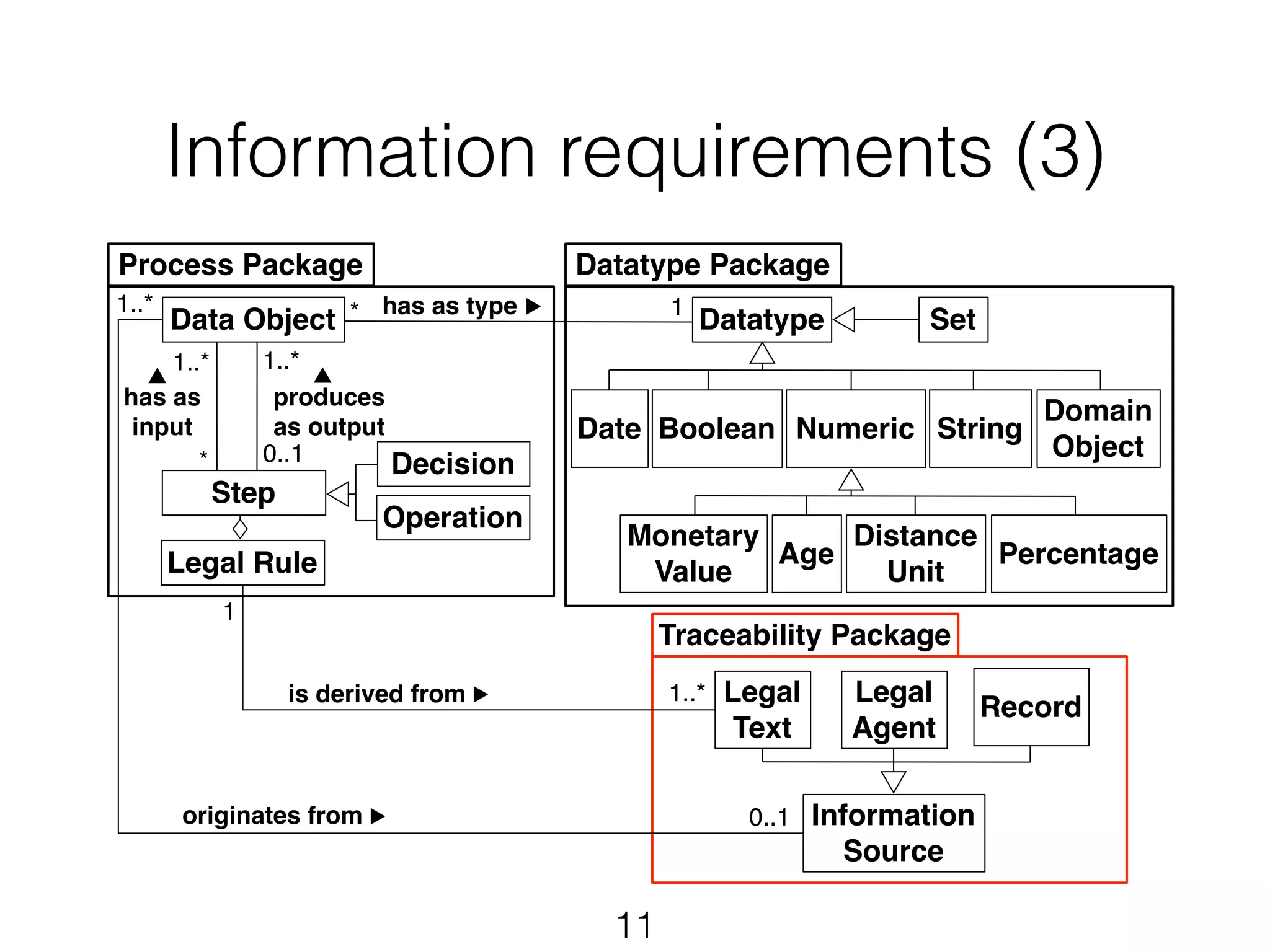
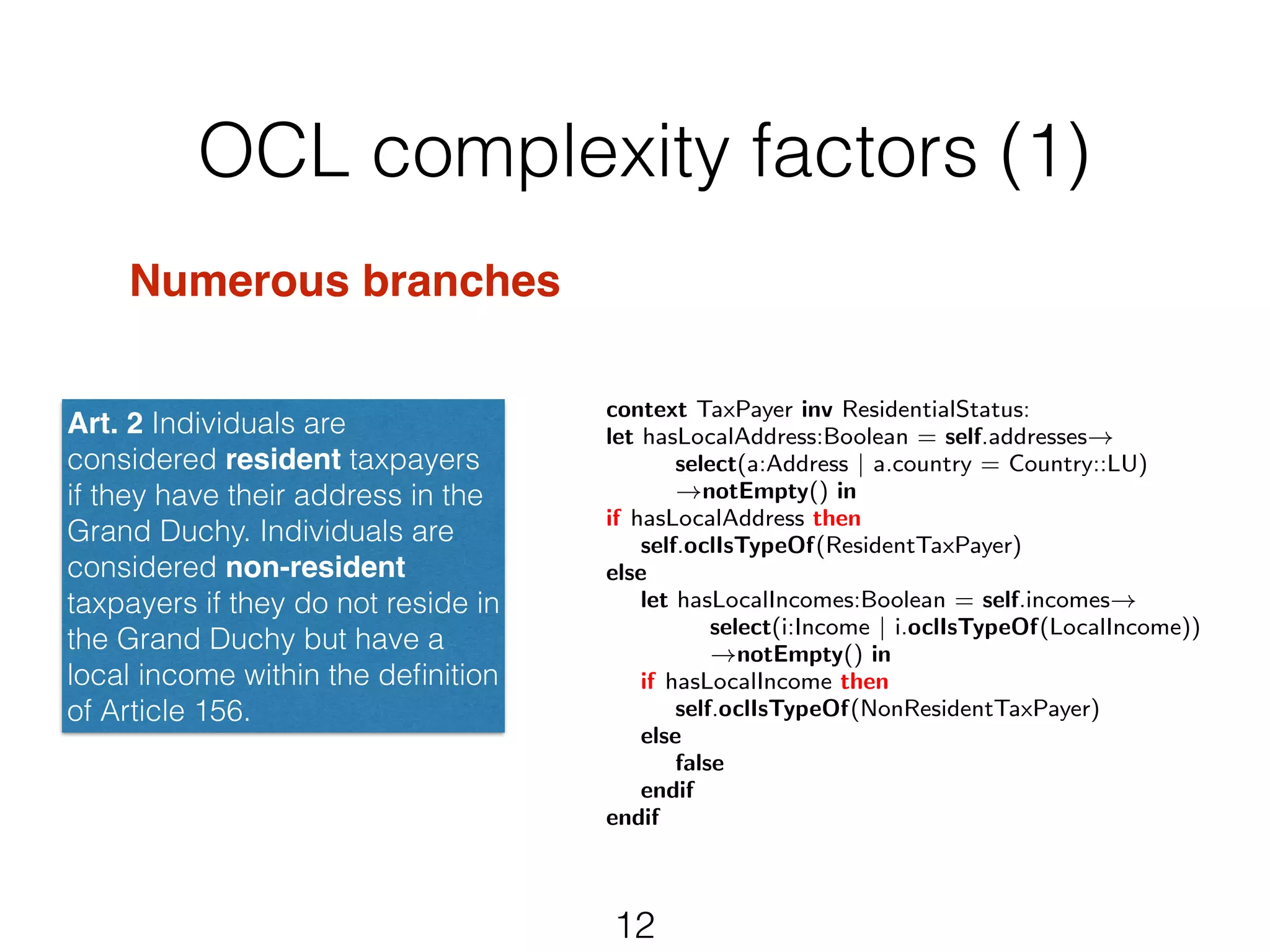
![OCL complexity factors (2)
Art. 127 […]. An eligible dependent is a person who lives in the same
household as the taxpayer but is not taxpayer himself. Only dependent
receiving some allowances from the government are eligible.
self.taxPayerDependents!select(dependent:Person | not dependent.oclIsTypeOf(TaxPayer) and
dependent.addresses!intersection(self.addresses)!notEmpty() and
dependent.allowances.amount!sum>0)
13
Lengthy navigations!
!
!](https://image.slidesharecdn.com/ghanem-models14-141003122021-phpapp02/75/Using-UML-for-Modeling-Procedural-Legal-Rules-13-2048.jpg)
![OCL complexity factors (3)
Art. 127bis On request, the taxpayer
gets a deduction for extraordinary
expenses for children care. When
children under the age of twenty-one
are maintained and educated mostly by
the taxpayer, the total amount of all
expenses dedicated to these children is
considered as extraordinary expenses.
However, extraordinary expenses defined
by the current article must not exceed
3.480 euros per year and per child […]
14
Nested iterations
context TaxPayer inv CE3:
let tax year:Date = self.tax year,
incomes:Set(Income) = self.incomes! select(i:Income | i.year = tax year),
dependents:Set(Dependent) = self.dependents! select(d:Dependent | d.age < 21 )
in
incomes!forAll(inc:Income | dependents!forAll(dep:Dependent | let total expenses:MonetaryValue = inc.expenses! select(exp:Expense | exp.beneficiary = dep)!sum()
in
if total expenses < 3480 then
total expenses = inc.getCE3(tax year).amount
else inc.getCE3(tax year).amount = 3480 endif))](https://image.slidesharecdn.com/ghanem-models14-141003122021-phpapp02/75/Using-UML-for-Modeling-Procedural-Legal-Rules-14-2048.jpg)
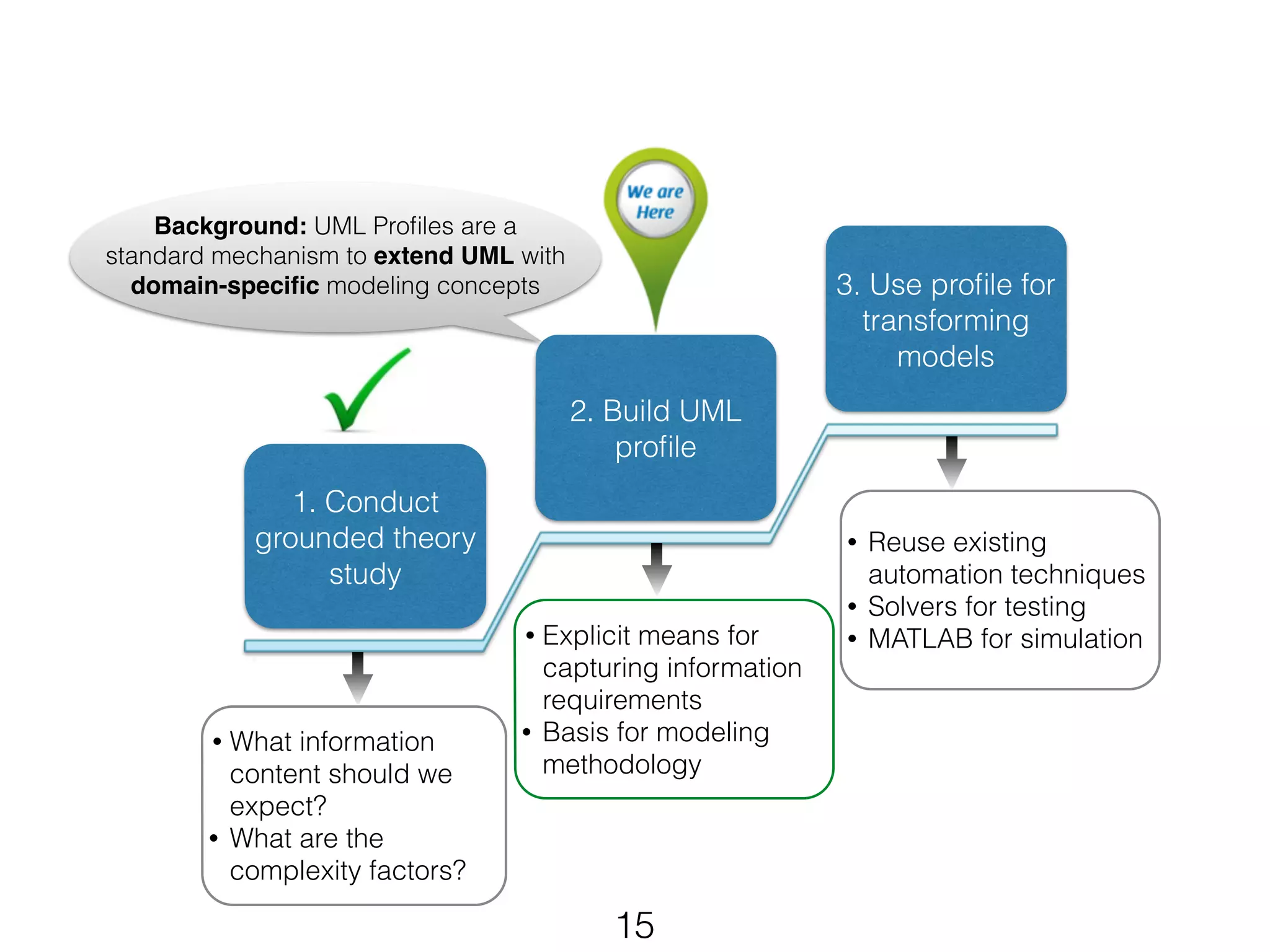
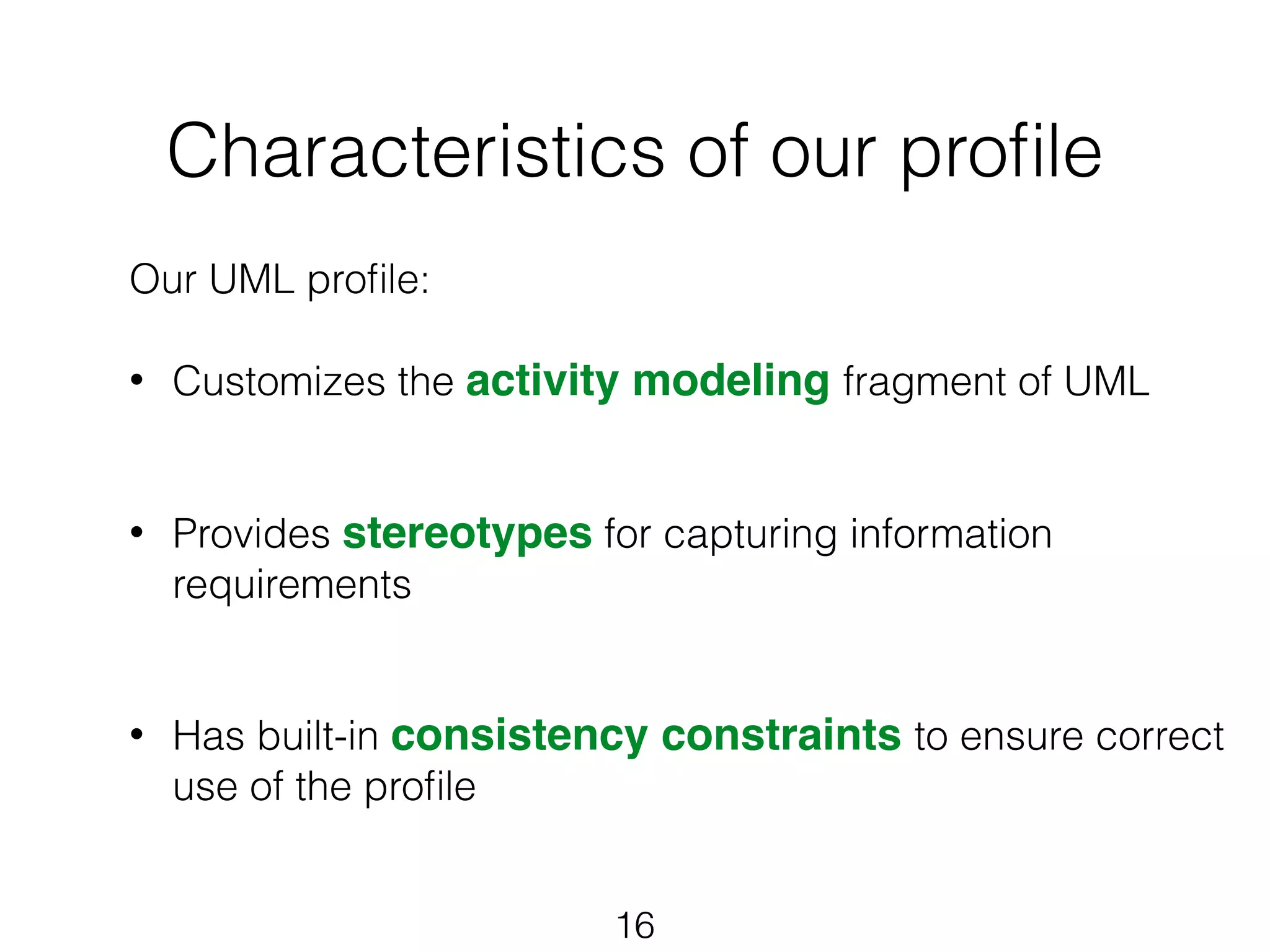
![Profile illustrated on an example
Art. 105bis […]The commuting expenses deduction (FD) is
defined as a function over the distance between the principal town
of the municipality on whose territory the taxpayer's home is
located and the place of taxpayer’s work. The distance is
measured in units of distance expressing the kilometric distance
between [principal] towns. A ministerial regulation provides these
distances.
!
The amount of the deduction is calculated as follows:
If the distance exceeds 4 units but is less than 30 units, the
deduction is € 99 per unit of distance.
The first 4 units does not trigger any deduction and the deduction
for a distance exceeding 30 units is limited to € 2,574.
17](https://image.slidesharecdn.com/ghanem-models14-141003122021-phpapp02/75/Using-UML-for-Modeling-Procedural-Legal-Rules-17-2048.jpg)
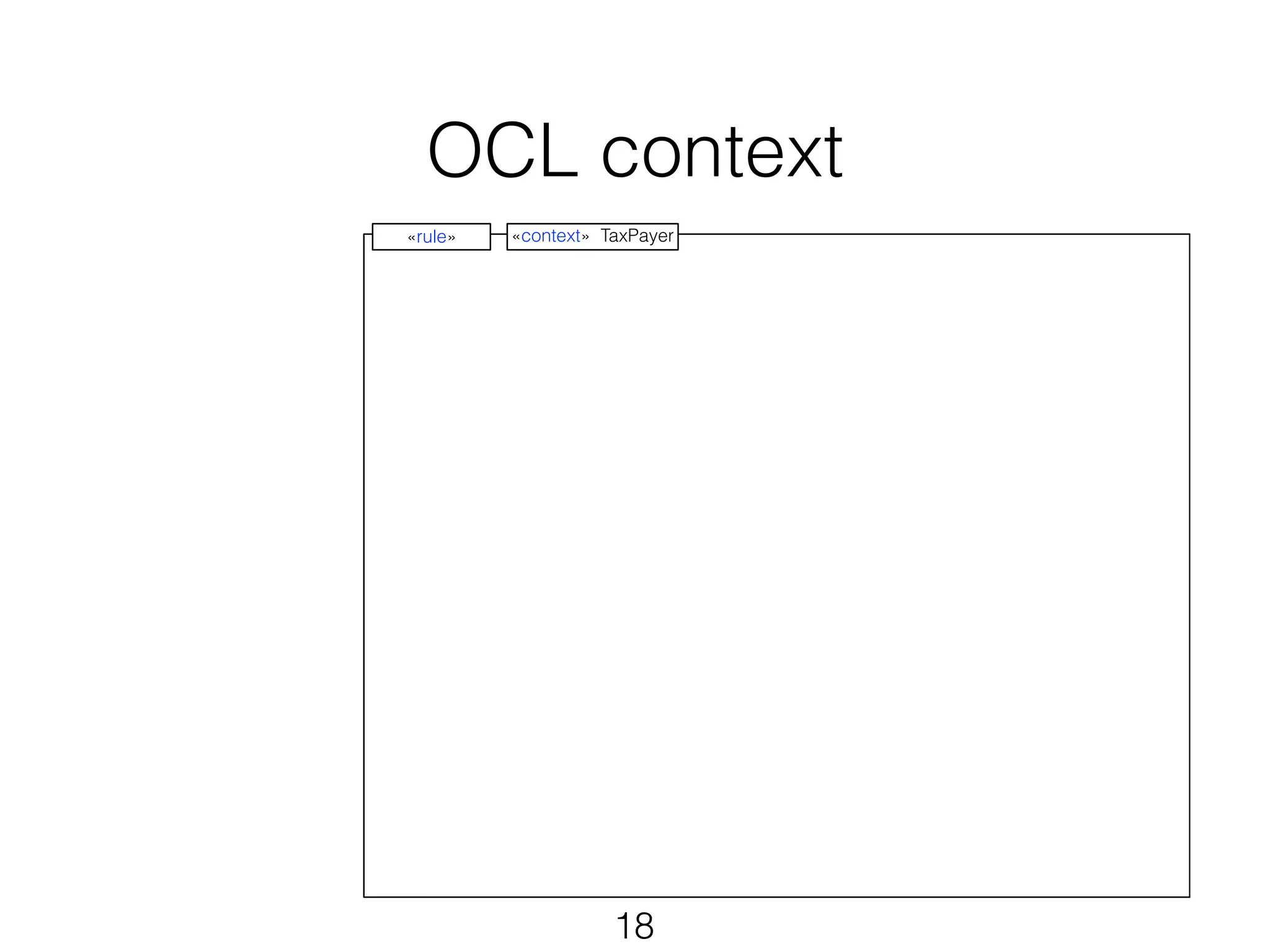
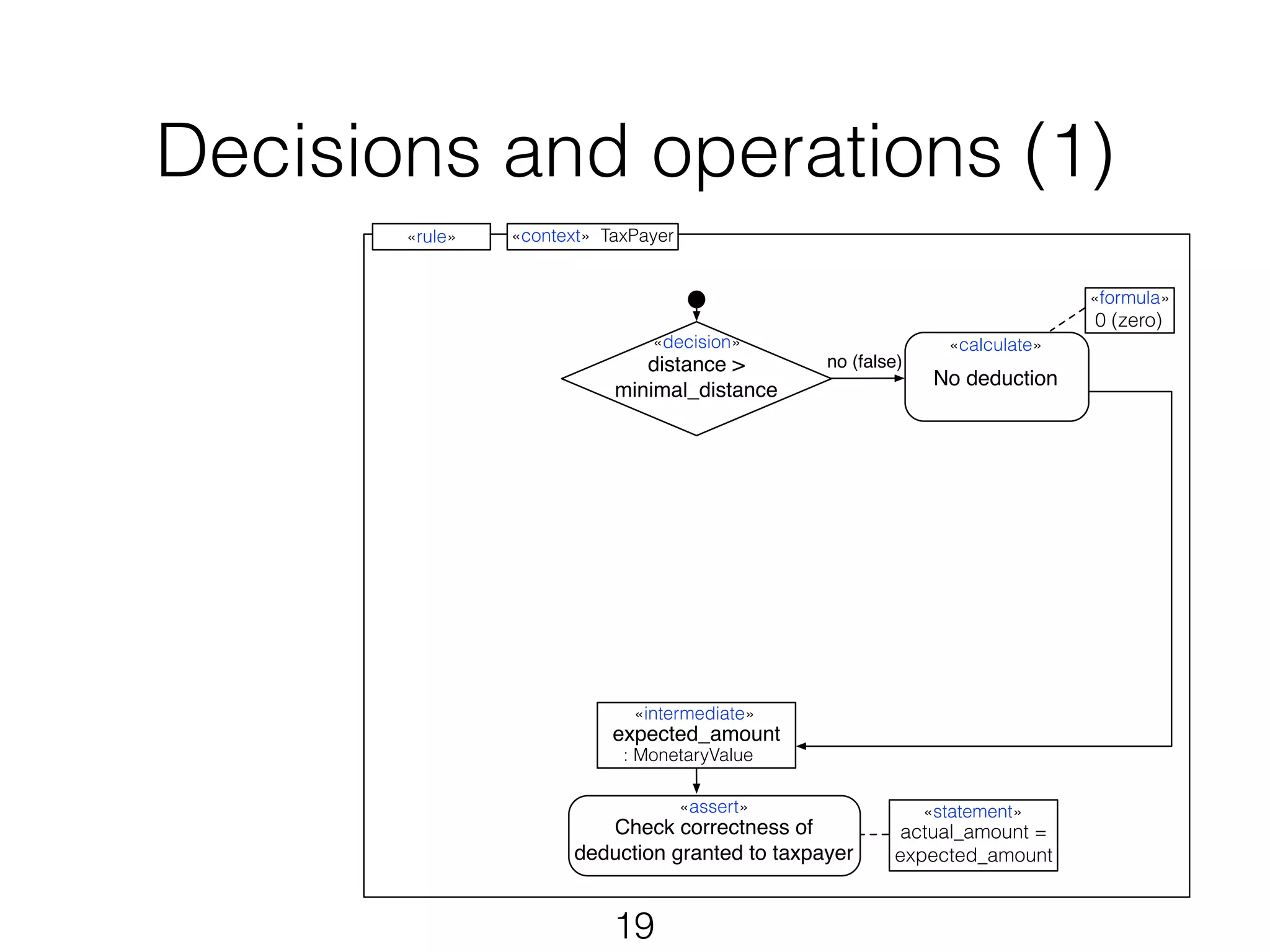
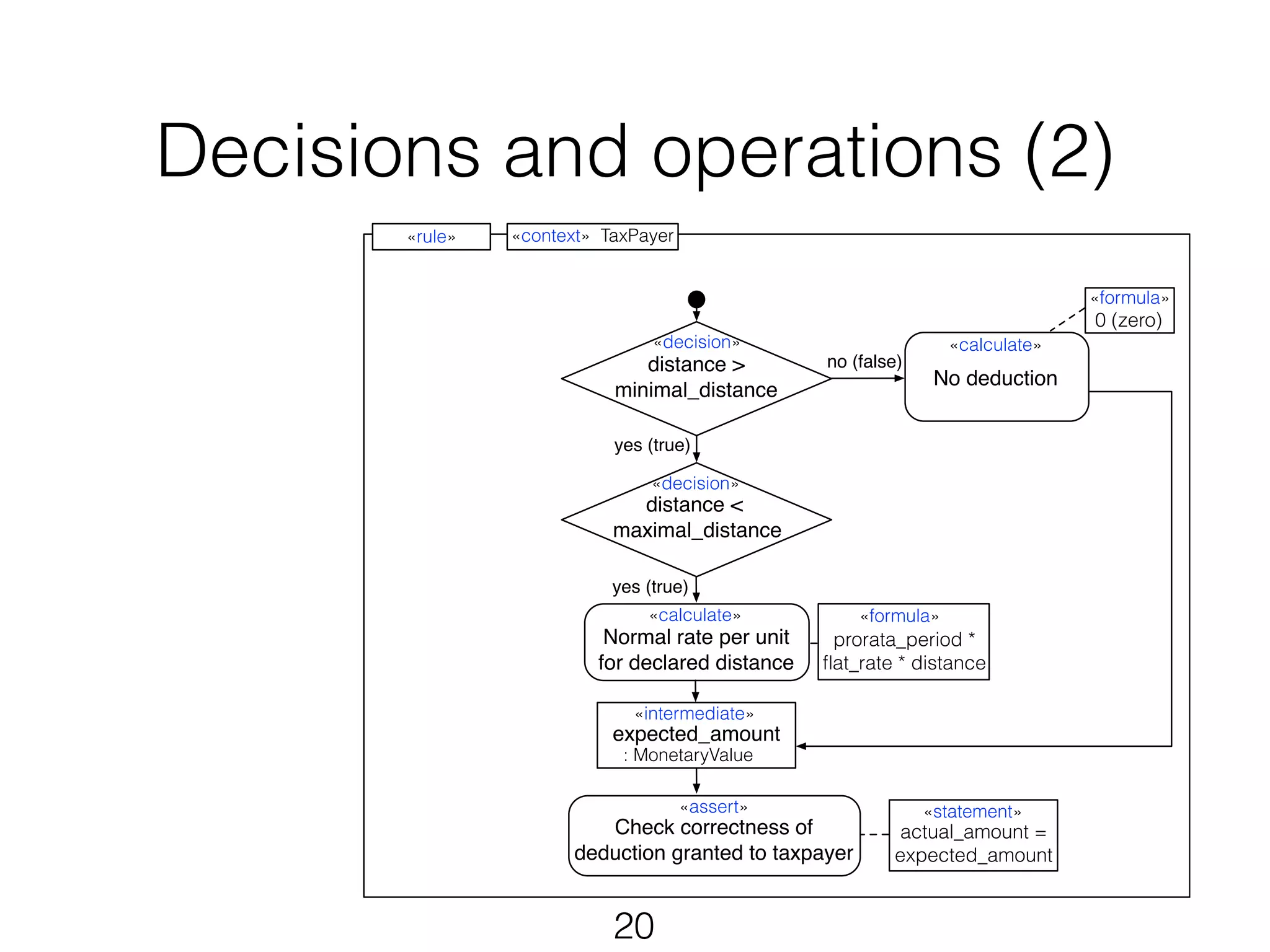
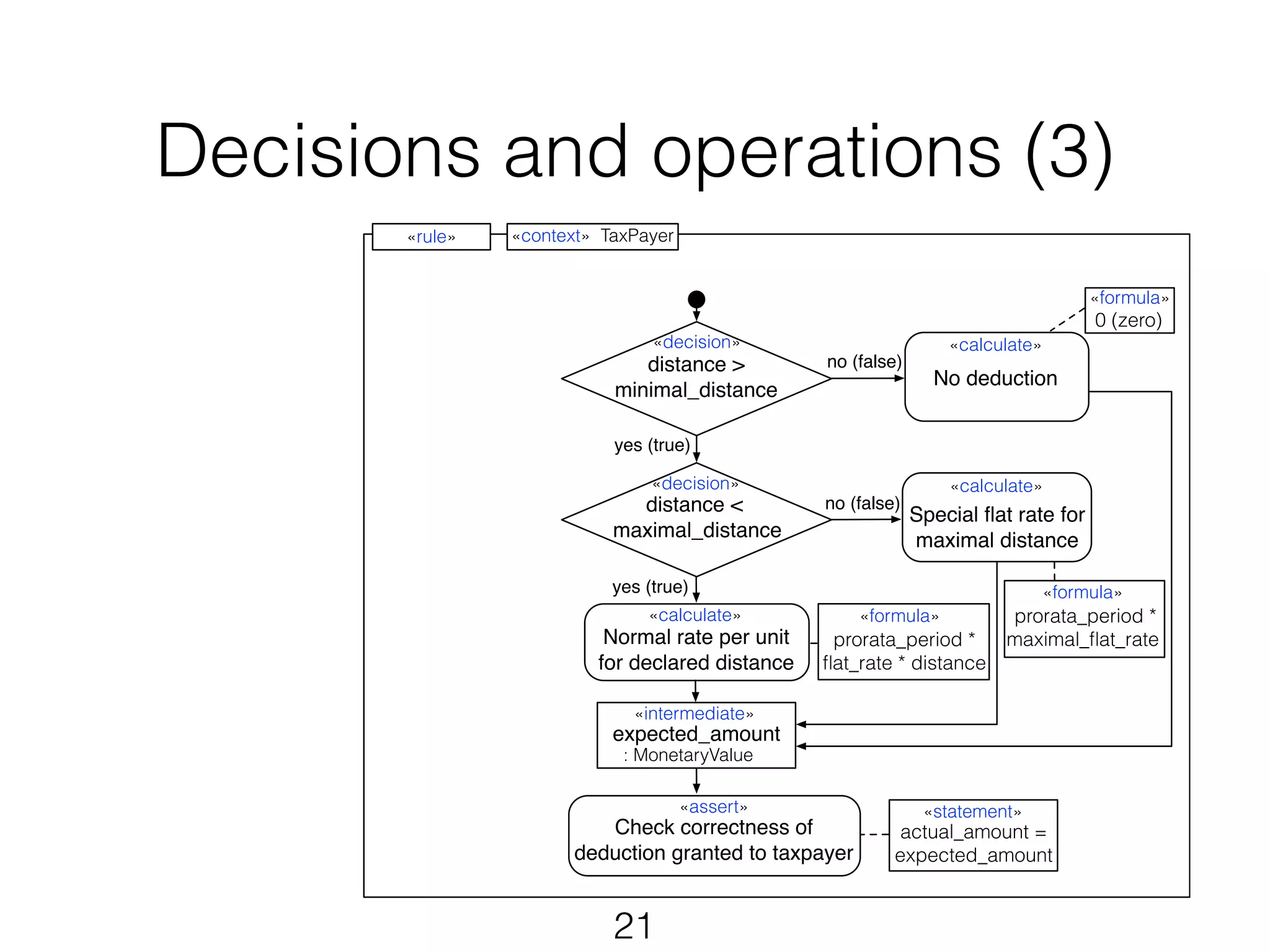
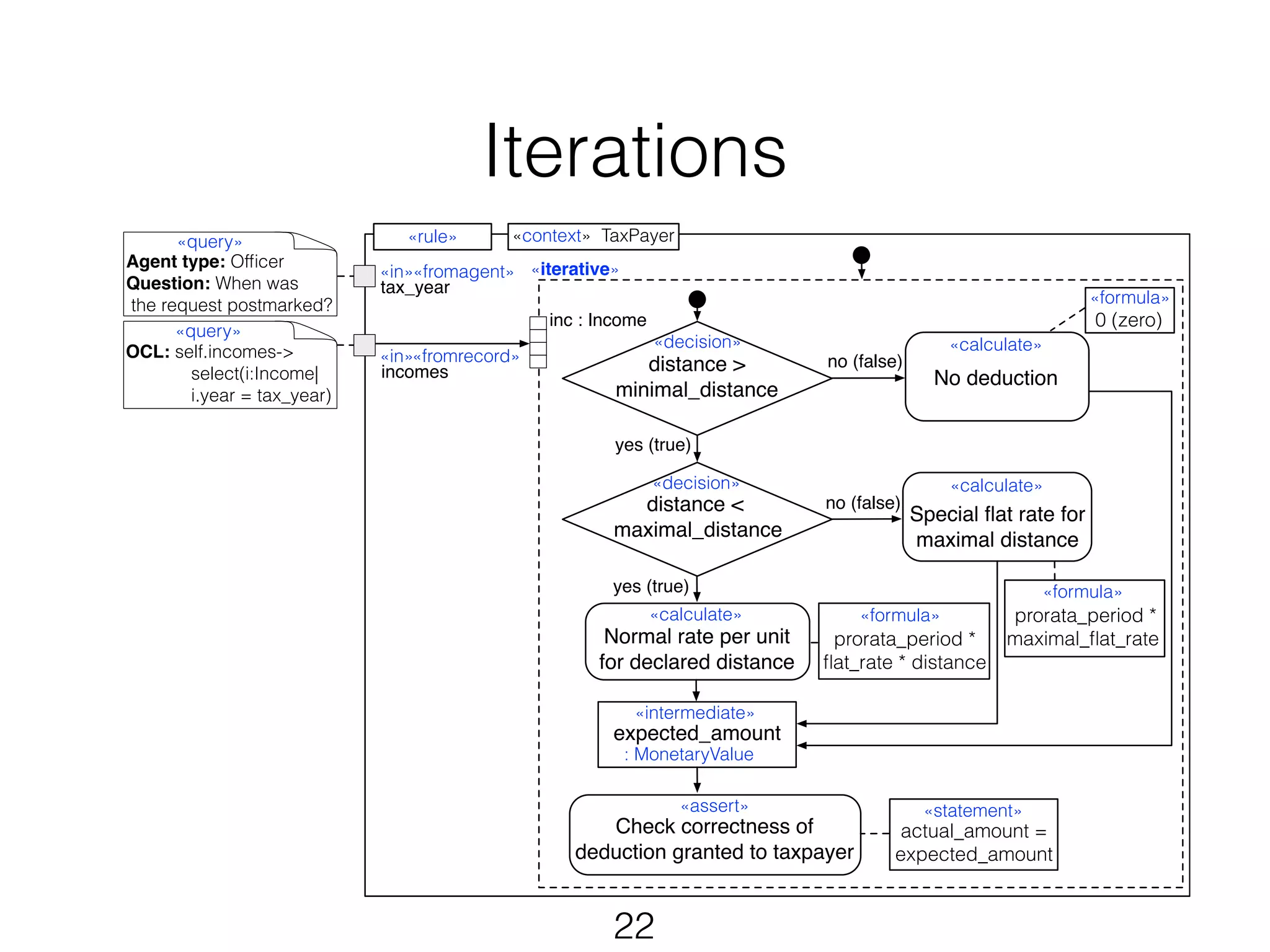
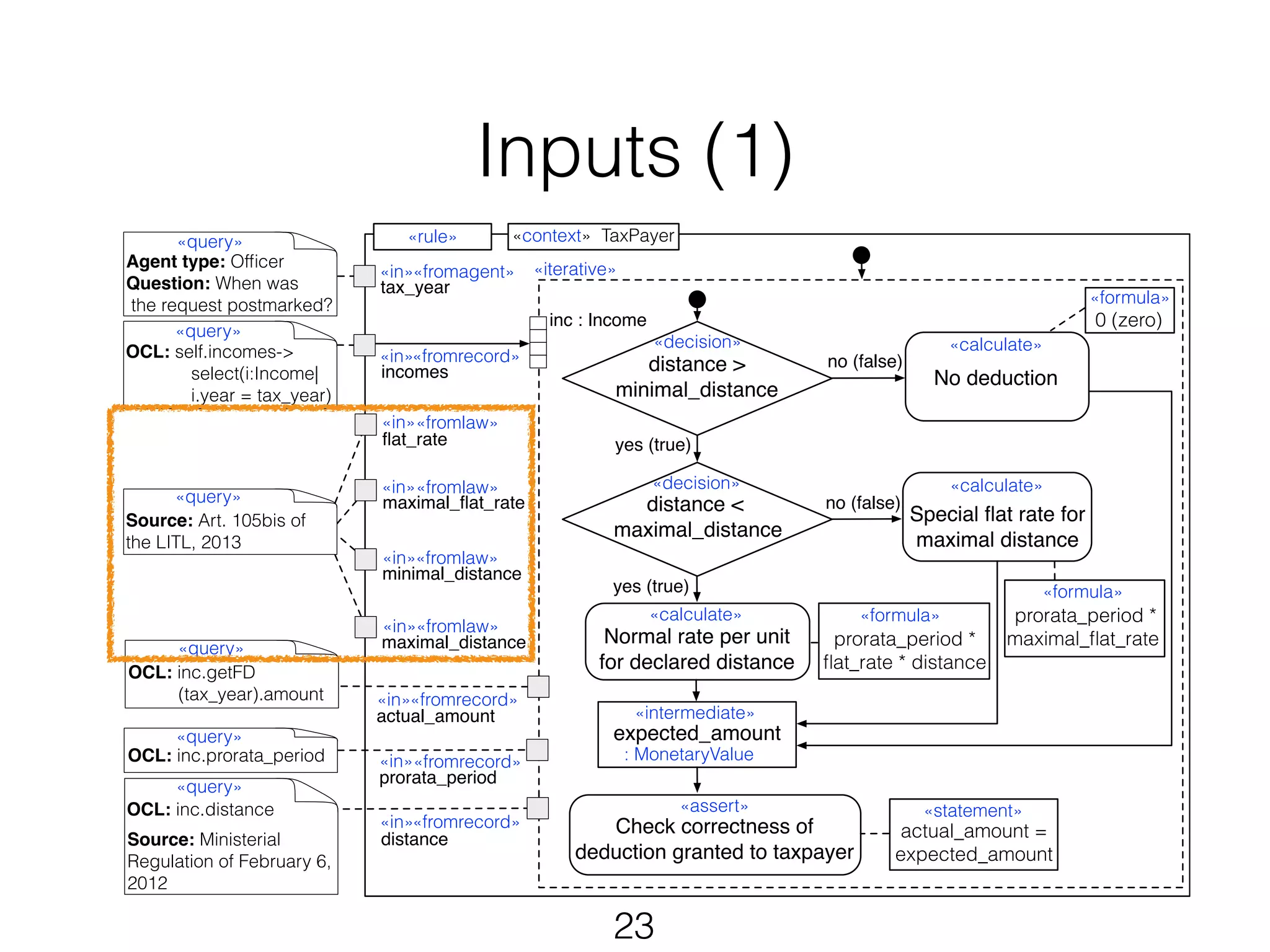
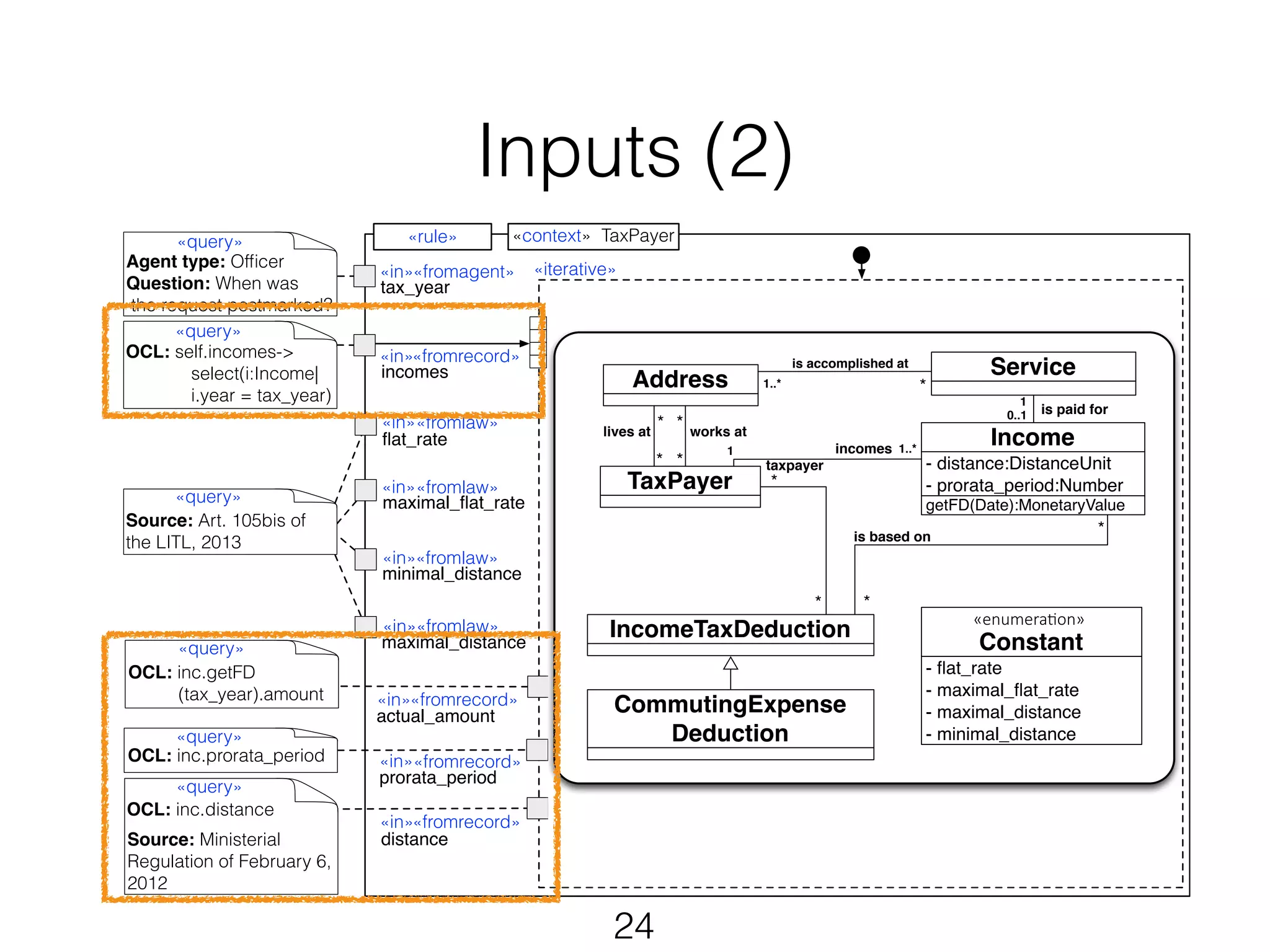
![Putting it together
25
1
«enumera(on»
Constant
no (false)
Address
TaxPayer
IncomeTaxDeduction
«context» TaxPayer
distance >
minimal_distance
«calculate»
Normal rate per unit
for declared distance
«intermediate»
expected_amount
: MonetaryValue
«assert»
Check correctness of
prorata_period *
flat_rate * distance
deduction granted to taxpayer
«rule»
«iterative»
inc : Income
«query»
{
Agent type: Officer
Question: When was
the request postmarked?
OCL: self.incomes->
select(i:Income|
i.year = tax_year)
«in»
«fromagent»
tax_year
«in»
incomes
distance <
maximal_distance
«fromrecord»
«calculate»
No deduction
«calculate»
Special flat rate for
maximal distance
«formula»
yes (true)
«query»
«query»
Source: Art. 105bis of
the LITL, 2013
OCL: inc.getFD
(tax_year).amount
«in» « fromlaw»
«in» « fromlaw»
maximal_flat_rate
«in»« fromlaw»
«in»« fromlaw»
«in»« fromrecord»
actual_amount
«query»
OCL: inc.prorata_period
«in»« fromrecord»
prorata_period
«query»
flat_rate
minimal_distance
maximal_distance
yes (true)
no (false)
«decision»
«decision»
prorata_period *
maximal_flat_rate
«statement»
«formula»
actual_amount =
expected_amount
«formula»
0 (zero)
«in»« fromrecord»
distance
«query»
OCL: inc.distance
Source: Ministerial
Regulation of February 6,
2012
- flat_rate
- maximal_flat_rate
- maximal_distance
- minimal_distance
*
* taxpayer
*
1 incomes
lives at
*
*
*
is accomplished at
1..*
CommutingExpense
Deduction
is based on
*
*
*
works at
Service
0..1 is paid for
Income
- distance:DistanceUnit
- prorata_period:Number
getFD(Date):MonetaryValue
1..*
Art. 105bis […]The commuting expenses
deduction (FD) is defined as a function over the
distance between the principal town of the
municipality on whose territory the taxpayer's
home is located and the place of taxpayer’s work.
The distance is measured in units of distance
expressing the kilometric distance between
[principal] towns. A ministerial regulation provides
these distances.
!
The amount of the deduction is calculated as
follows:
If the distance exceeds 4 units but is less than 30
units, the deduction is € 99 per unit of distance.
The first 4 units does not trigger any deduction
and the deduction for a distance exceeding 30
units is limited to € 2,574.
{](https://image.slidesharecdn.com/ghanem-models14-141003122021-phpapp02/75/Using-UML-for-Modeling-Procedural-Legal-Rules-25-2048.jpg)
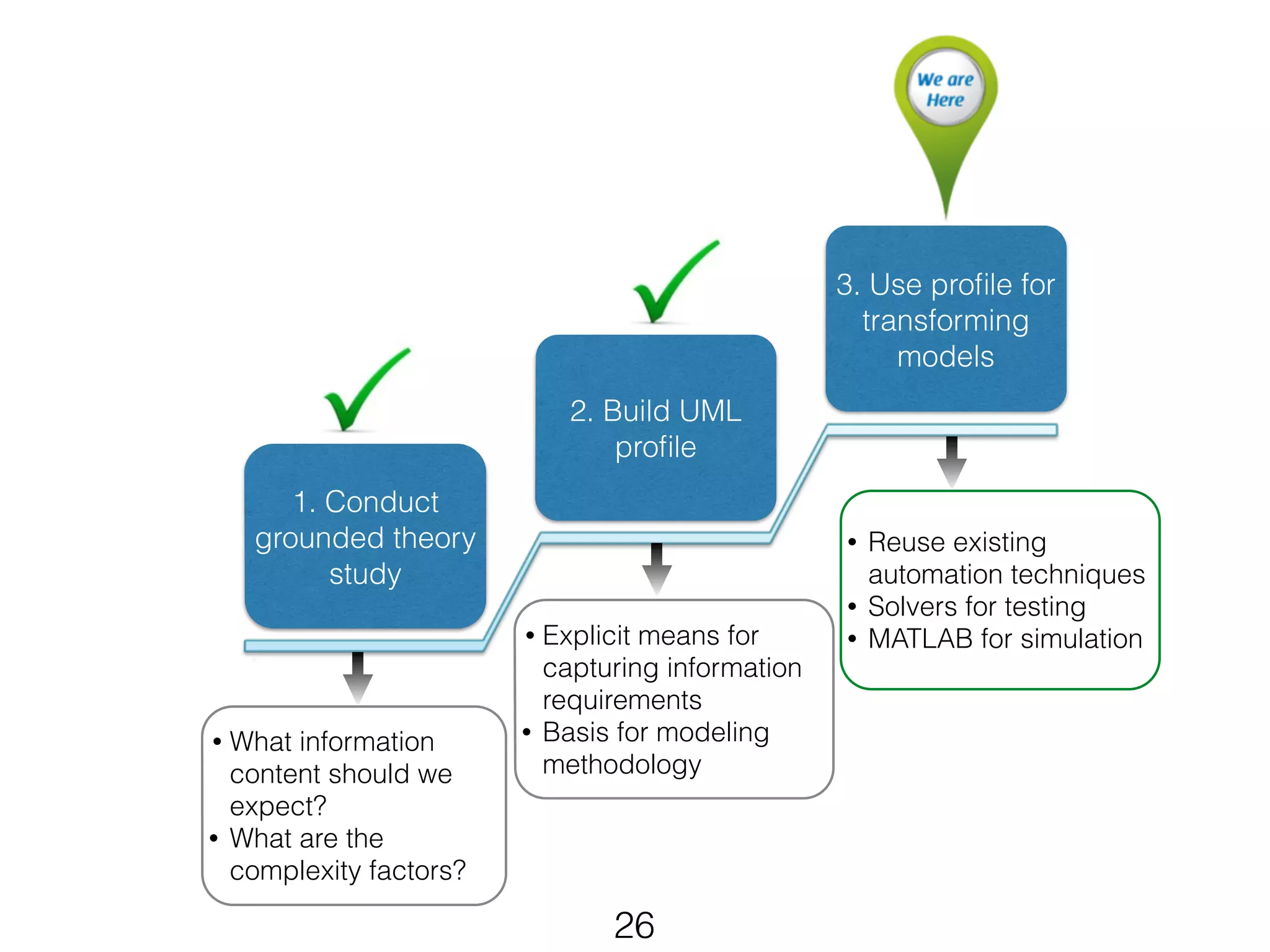
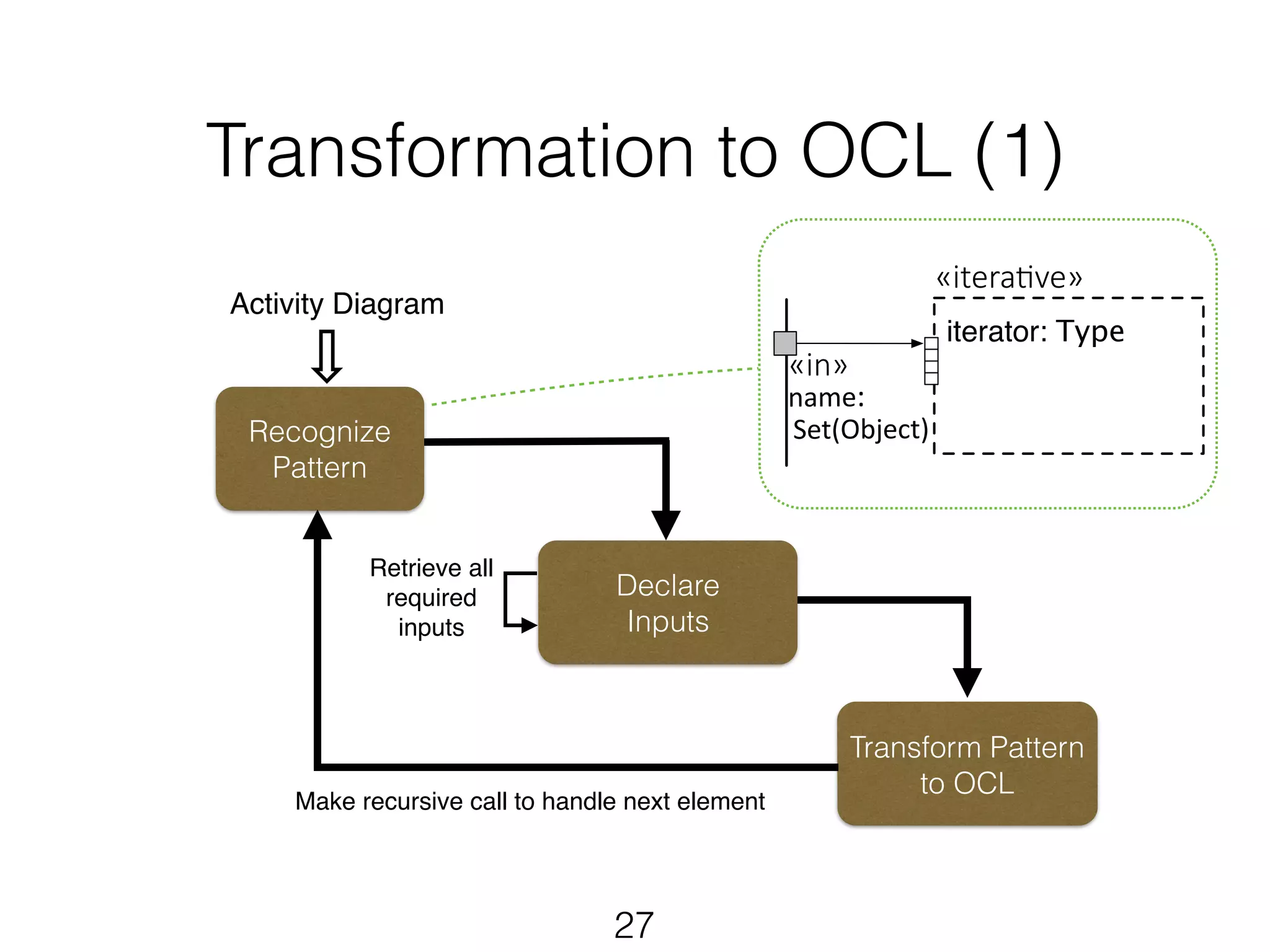
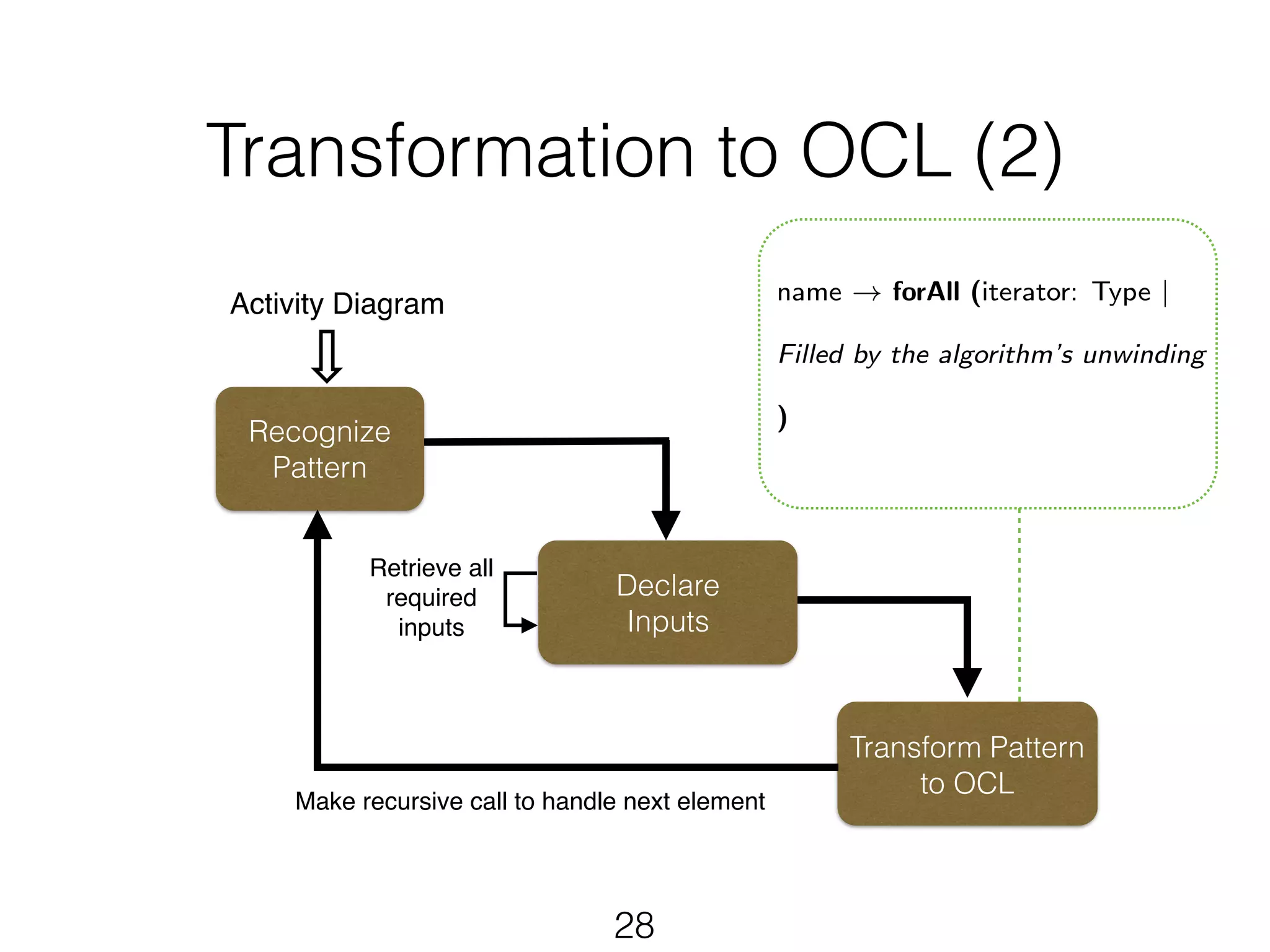
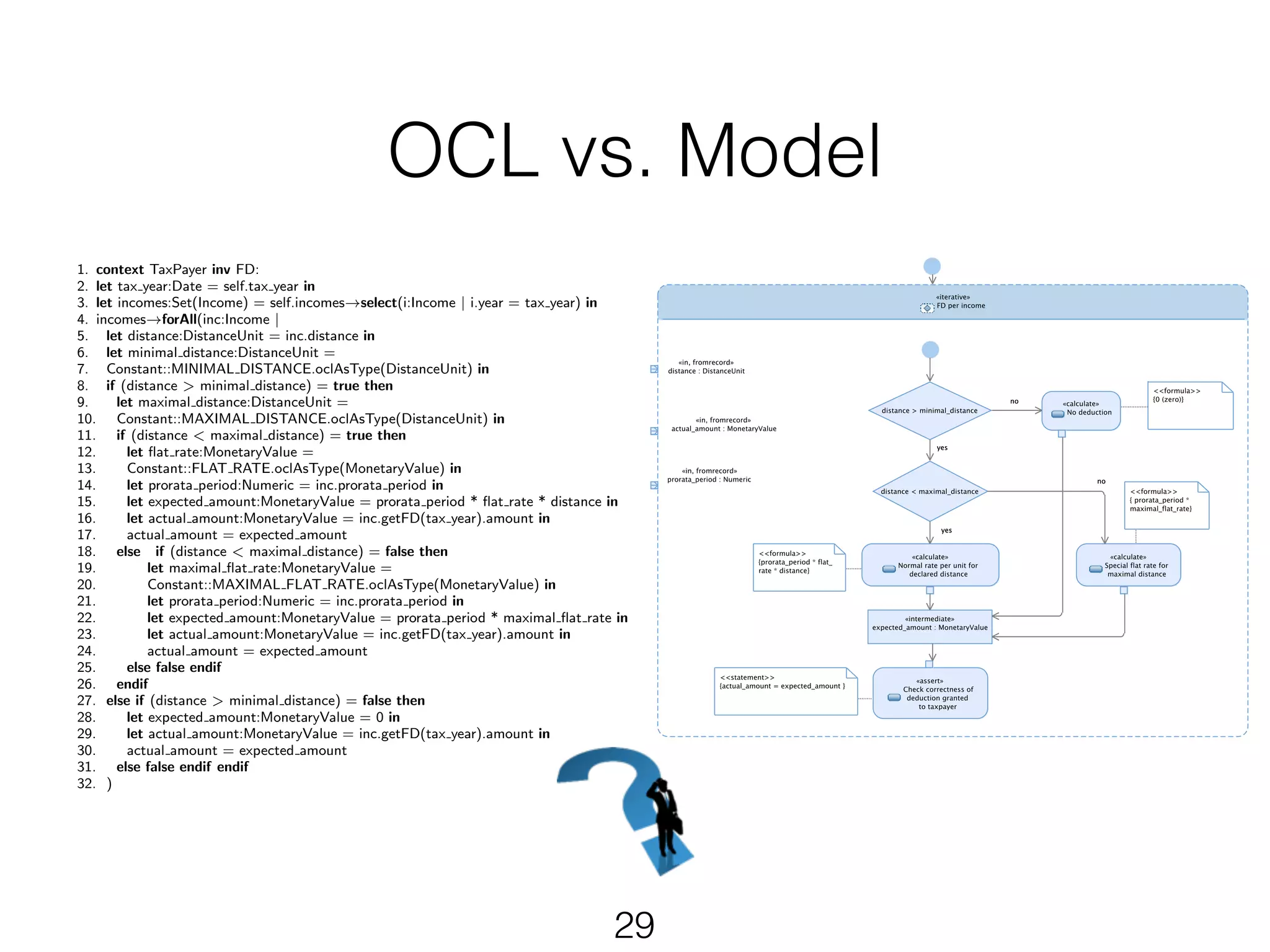
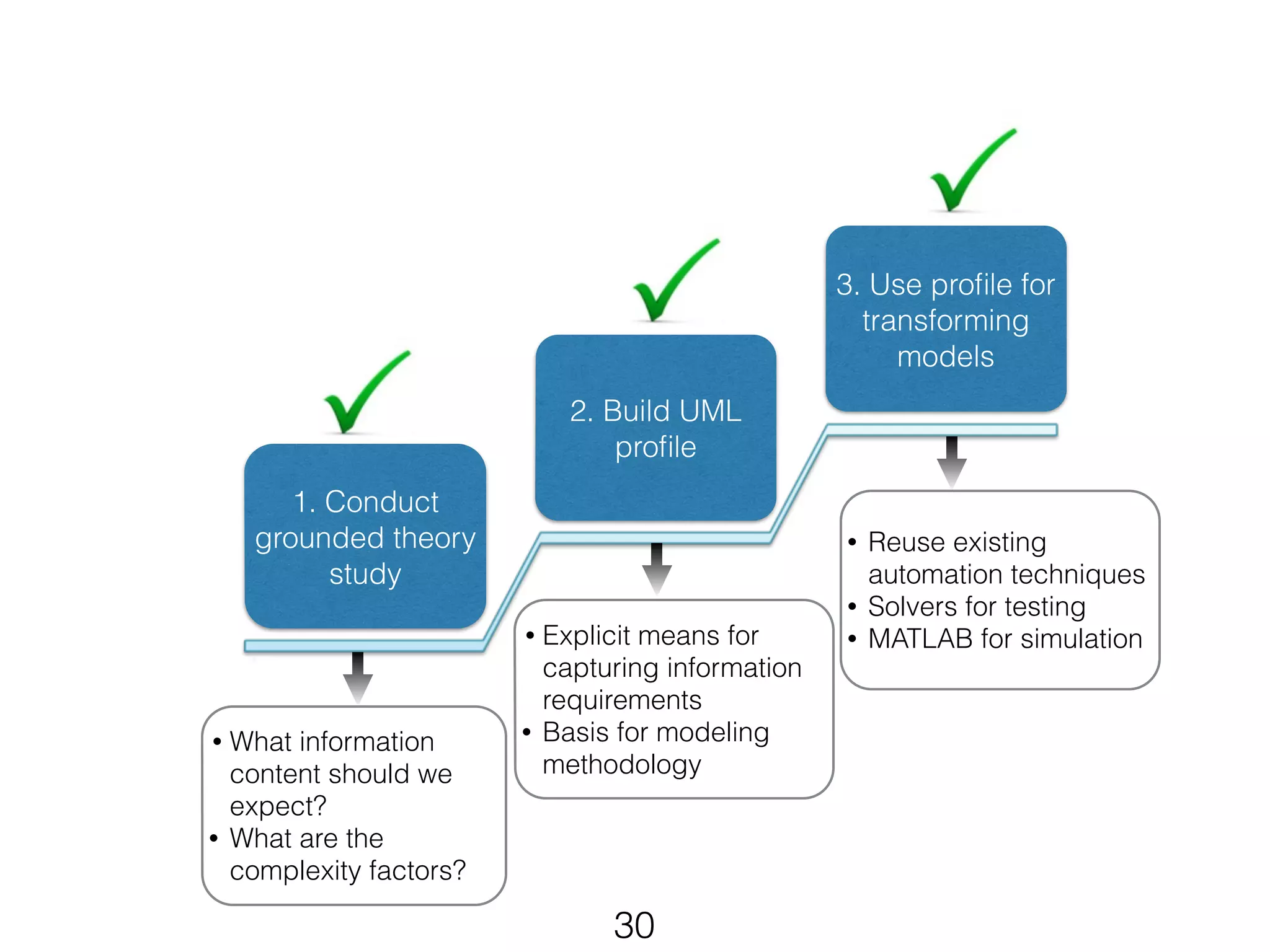
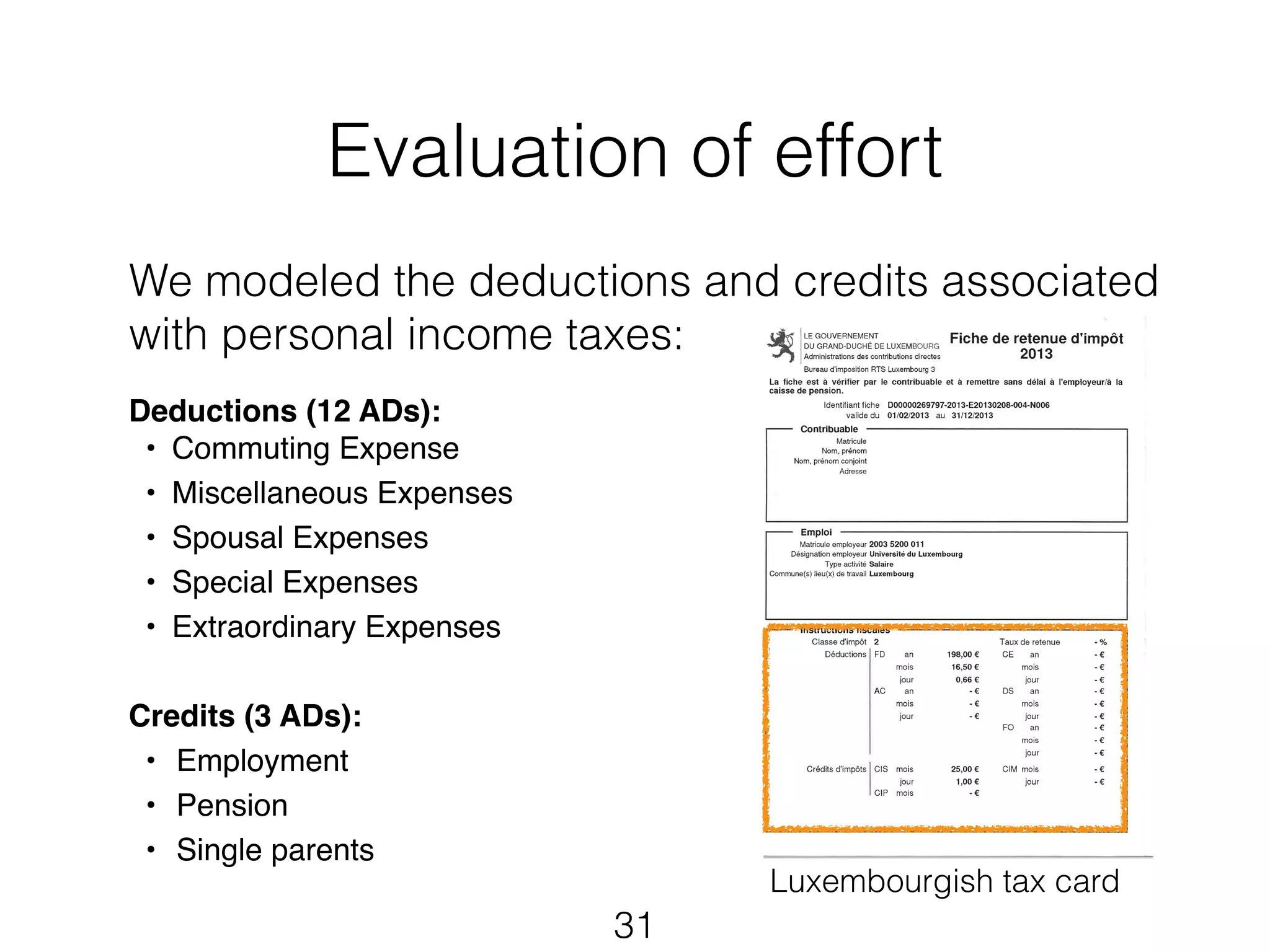
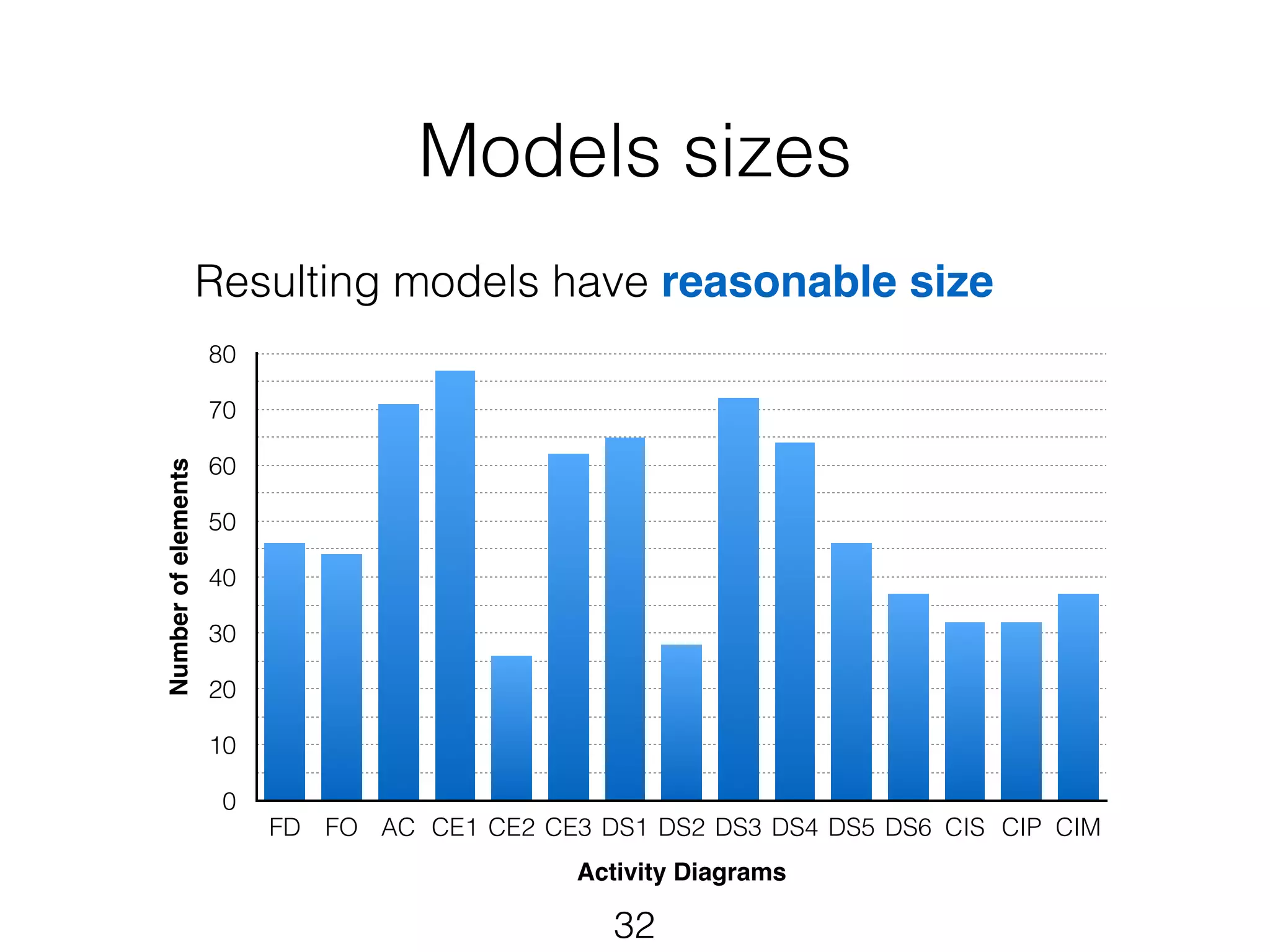
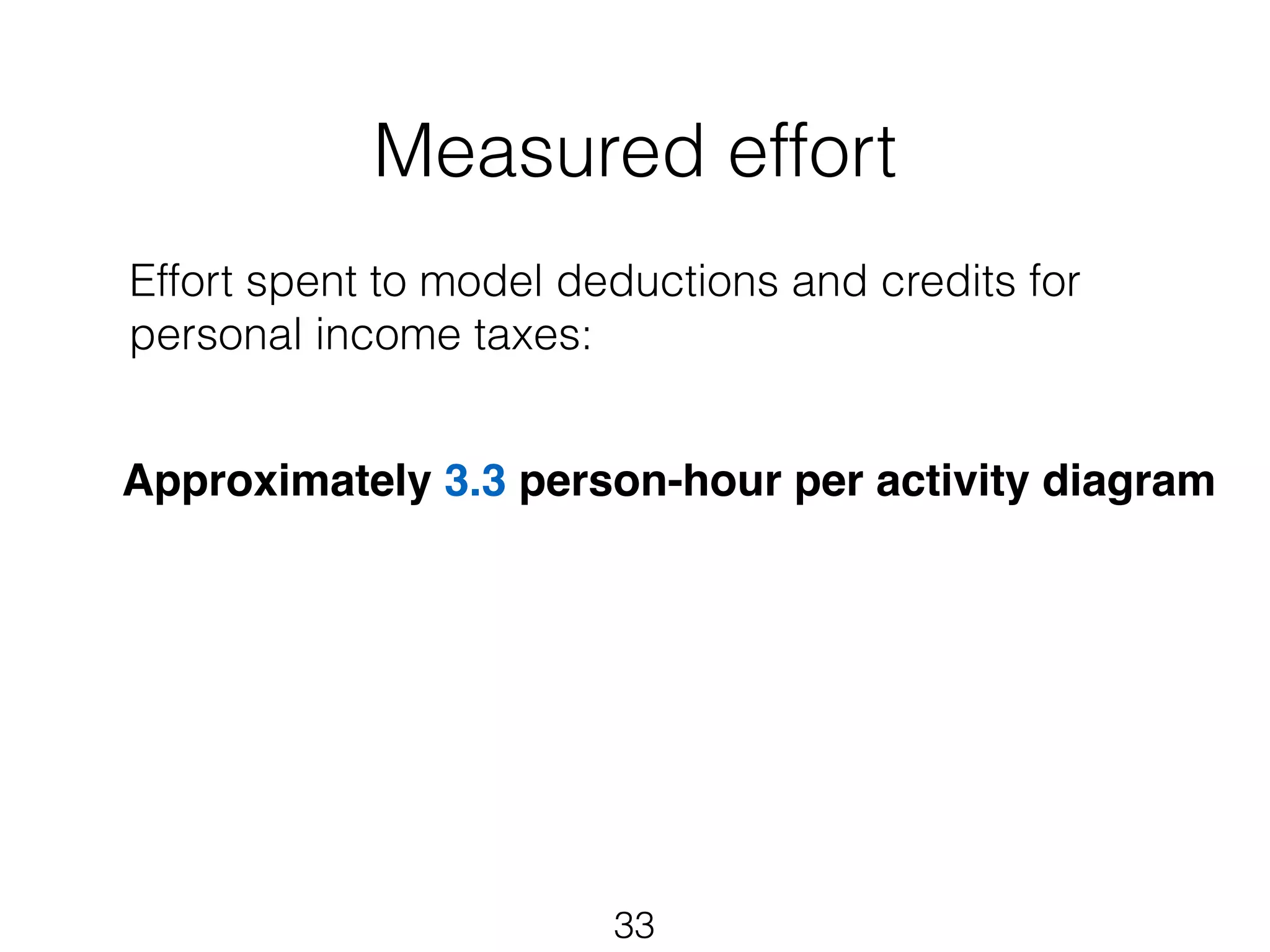
![Complexity reduction (1)
• AD tailored by our profile vs. manually-written OCL
!
• Metrics related to the identified complexity factors:
34
- Navigations
!
- If statements
!
- Operations on collections
!
- Iterative operations
[Reynoso et al., 2004]](https://image.slidesharecdn.com/ghanem-models14-141003122021-phpapp02/75/Using-UML-for-Modeling-Procedural-Legal-Rules-34-2048.jpg)
